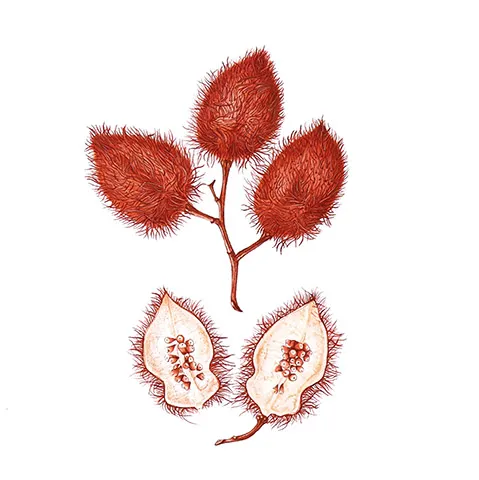
Achiote
Bixa orellana
Order: Malvales
Family: Bixaceae
Genus: Bixa
Species: Orellana
Common names: Achiote, annato, cocote, bija, bixa, onnote, urucú.
Part of the plant used for pigment: Seed
Color: Red
Achiote pigment on paper.
.webp)
Achiote pigment on paper. 102 x 68 cm.
Achiote fruit.
Planta
Achiote. Leticia, Colombia, 2011.
General Description
Robust, leafy and wide-spreading shrub reaching between three and ten meters in height. Its leaves are shaped like an elongated heart; the pink or white flowers are grouped at the end of the branches. The fruit is an oval-shaped capsule with small, stiff bristles that range in color from yellow to green, and from red to brown once ripe. The conical-shaped seeds are covered by a thin waxy layer called aril, which contains a red-orange coloring rich in carotenoid pigments—80% bixin (red pigment) and a smaller proportion of norbixin (yellow pigment).
Achiote. Leticia, Colombia, 2011.
Geographic Distribution and Natural History
Achiote is an Amazonian shrub that grows mainly in hot climates on mountain slopes, between 100 and 1,800 meters above sea level; it is also found in tropical areas, from the Amazon region of Brazil to Central America. It is grown as a crop in Mexico, Colombia, Brazil, Peru and Ecuador—where it has been cultivated since pre-Hispanic times—although it has now spread to other regions of the world, such as Asia and Africa. Bixa orellana was described by the Swedish botanist Carlos von Linnaeus in 1753, though its place of origin was unclear for a long time. However, it has recently been discovered that it was domesticated in the Brazilian Amazon from the species Bixa urucurana, which grows in the wild in the tropical jungles of South America. The word “achiote” comes from the Nahuatl achiotl, a language spoken by the Aztecs, and means “seed of fire” or “seed that shines.” Its scientific name, Bixa orellana, comes from the surname of the Spanish explorer Francisco de Orellana, who discovered the Amazon River. Despite having been domesticated in northern South America and having been used by pre-Hispanic cultures such as the Moche and the Inca, its cultivation and use later spread to Mexico and Central America as a result of the Spanish Conquest. In Caral, a pre-Inca archaeological site, located near the city of Casma in Peru, evidence of its use as a narcotic has been found. The inhabitants of this city, considered the oldest in the Americas, prepared a mixture that included achiote, lime and coca in around 3000 B.C. The Incas used achiote leaves as a powerful natural medicine for the treatment and cure of diseases, long before the Spanish Conquest. The first historical mention of achiote is found in the Historia general y natural de las Indias, by the chronicler of the Indies Gonzalo Fernández de Oviedo, the first part of which appears as a summary in 1535, and its complete version is published in Madrid in 1851. It is also mentioned by other chroniclers such as the missionaries Bernabé Cobo and Joseph Gumilla. In 1659 it was brought to Europe by the French explorer Rochefort, who called it rocou, and it began to be used as a coloring in a wide variety of products from textiles to food. Its use in the present day has been recorded among native Brazilian tribes, the Taínos in Puerto Rico, the Tsáchila of Ecuador and Amazonian tribes. The Pijaos of Colombia call it bija, in Venezuela it is called anotono, and in Paraguay and Bolivia it is known as urucú, a term from the Guaraní and Tupí languages that means red.
Achiote pigment extraction.
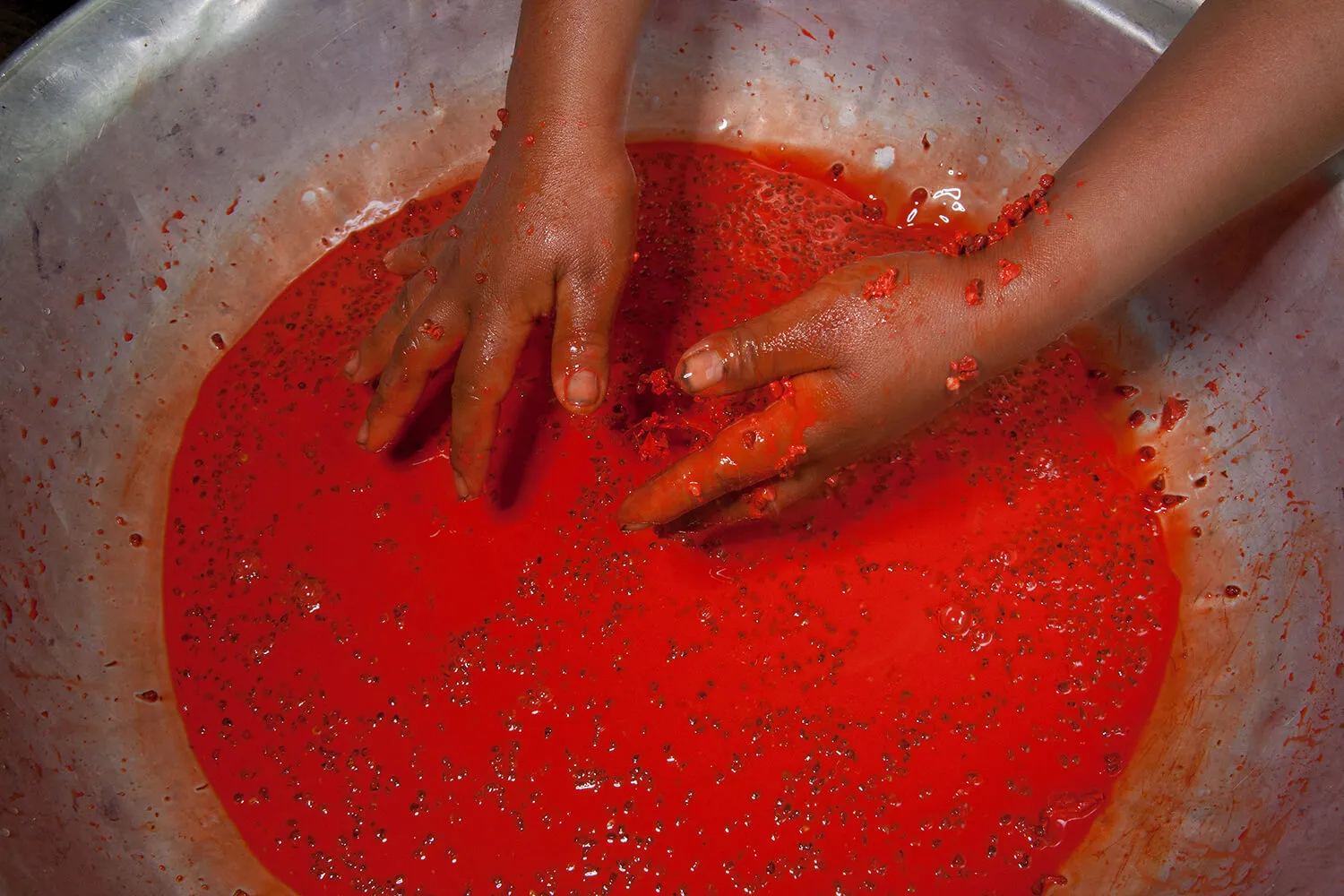
Pigment preparation with the Achiote seeds. Leticia, Colombia, 2011.
Uses
From pre-Hispanic times to the present day, achiote has been used for its medicinal properties, especially its bark, leaves and seeds, due to its emollient, antioxidant, analgesic, antibiotic, antibacterial, astringent, antiseptic, febrifuge, antidiabetic, antidysenteric, antiparasitic, anti-inflammatory and wound-healing properties. Its oil is rich in essential oils, beta-carotene, tocotrienols, fatty acids, flavonoids and vitamin C. Its leaves are used to treat skin infections, conjunctivitis, sore throats, angina, respiratory and kidney conditions, fever and diarrhea, hypertension and hemorrhoids. They are also used in infusion to perform vaginal washes as it is effective in controlling inflammation caused by fungi and bacteria. Achiote seeds are used against measles and smallpox, to cure headaches, neuralgia, irritations, inflammations, excoriations, asthma, dyspnea and pleurisy. The seeds have a natural pigment with multiple uses. Traditionally, different native communities of America have used annatto—as it is known in English—to paint and tattoo the body, as a repellent, as sunscreen, and for the lips. From the seeds, both hydrosoluble (water-soluble) and liposoluble (oil-soluble) colorants are obtained, depending on the solvent used in the extraction. For this reason it is very useful for dyeing textiles and as a food colorant or condiment, as it is non-toxic and tasteless. Today, the pigment that is extracted from the achiote plant has attained global economic importance, since it is one of the most frequently used natural dyes for coloring food, cosmetics and pharmaceutical products.
Pigment
A red color is extracted by rubbing the seeds. The yellow-fruit variety of achiote was the kind chosen this time. This is a low-yielding dye, since abundant fruit is necessary for the extraction of color pigment. The extract adheres well on paper, while the intensity of the color diminishes and becomes softer when used on fique (natural fiber) and cotton.
Achiote pigment.
Extracción + teñido

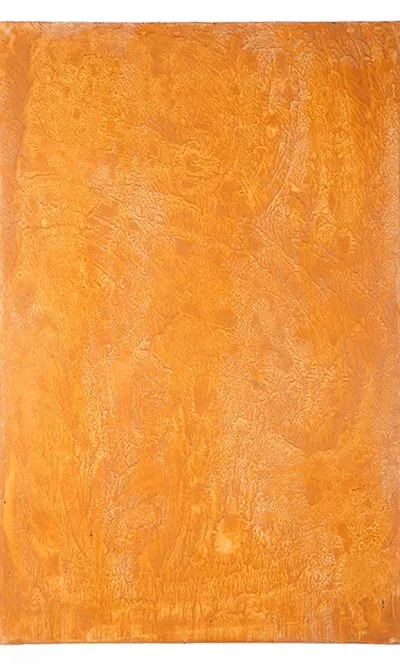
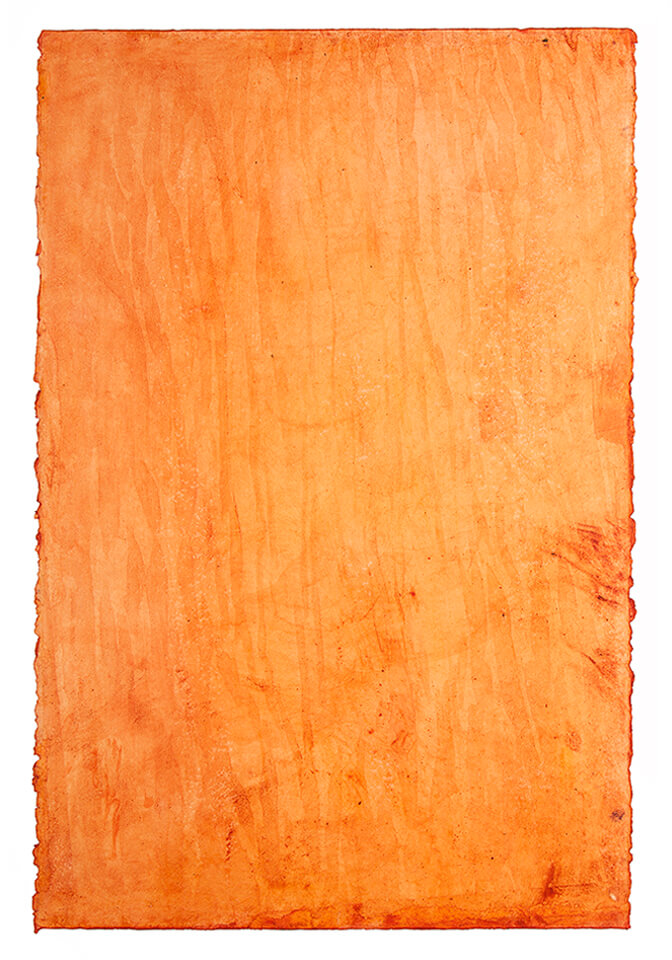
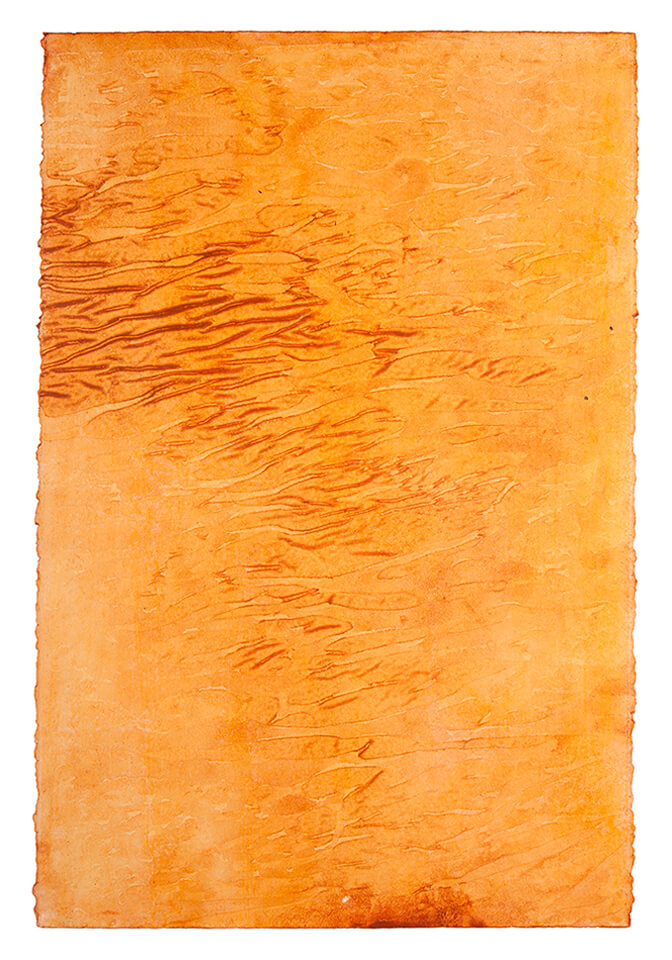
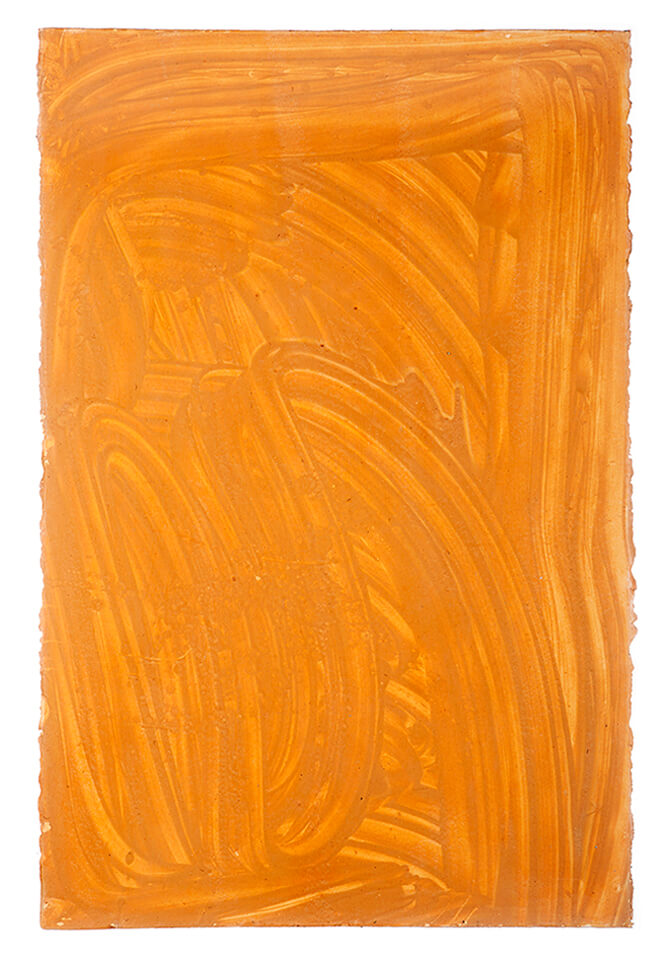
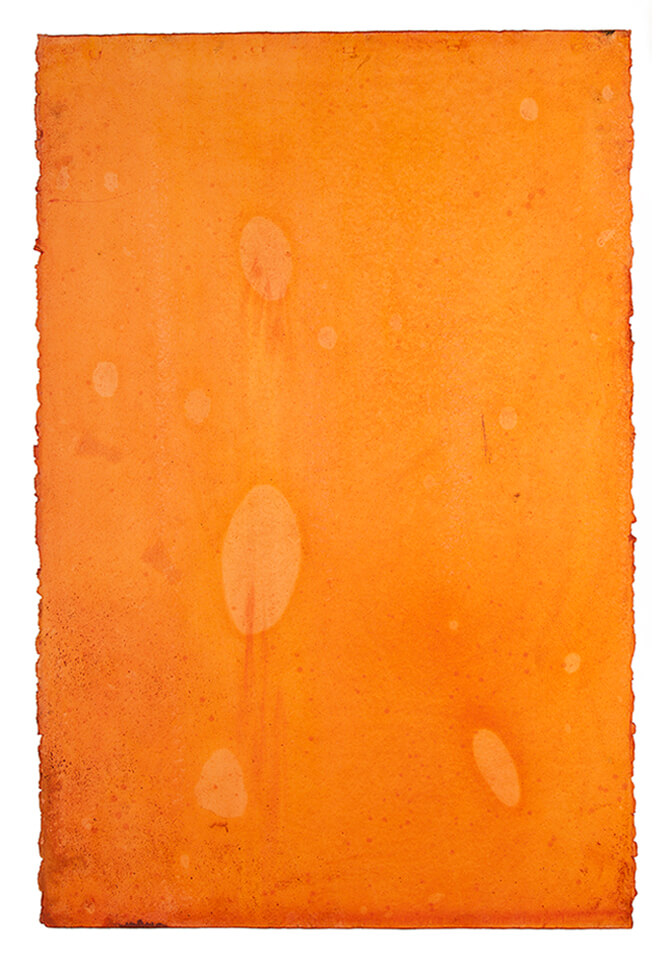
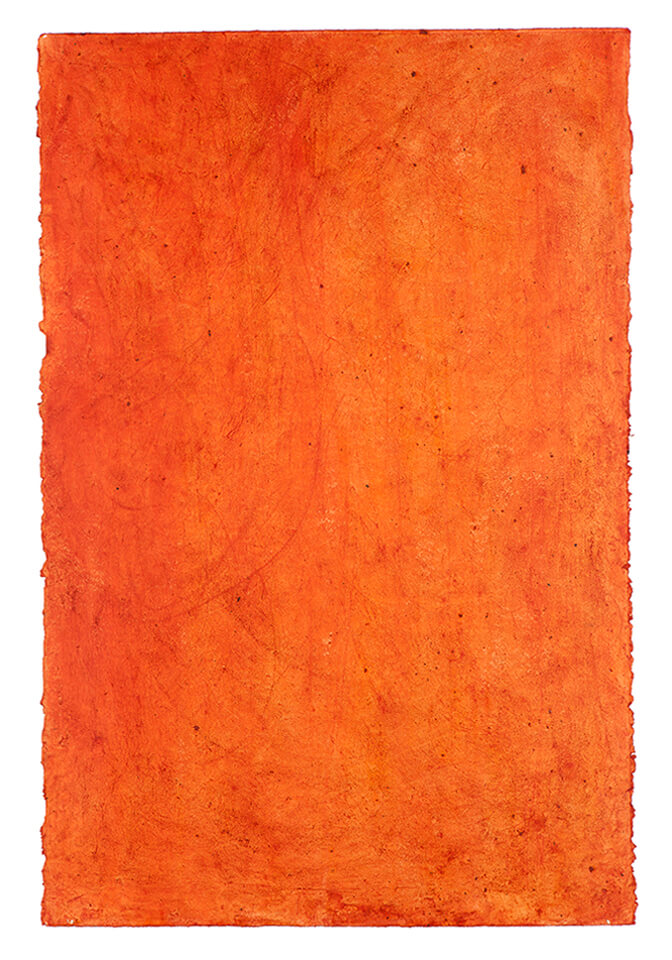
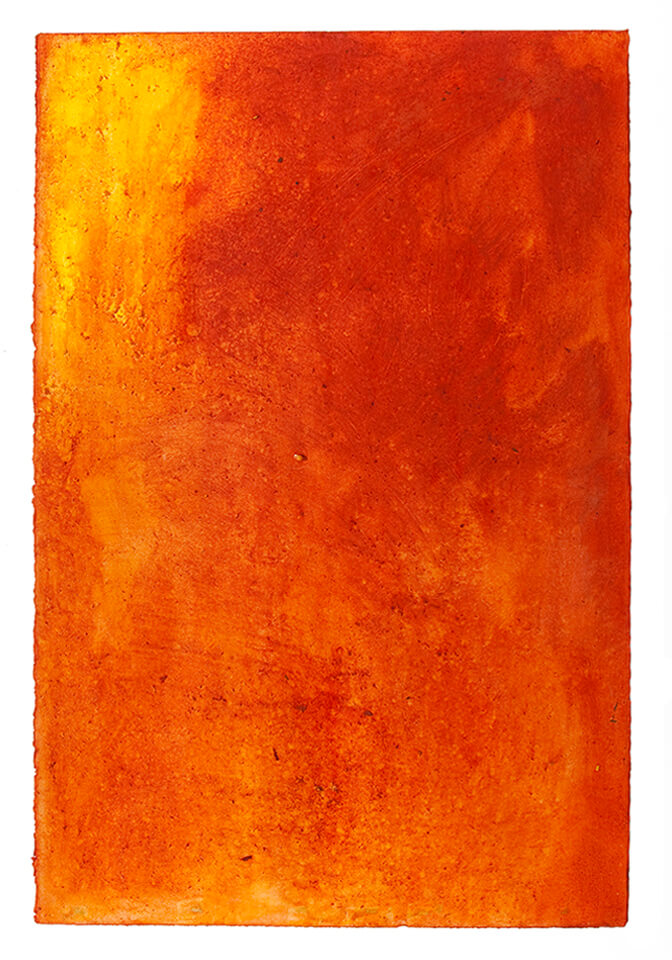
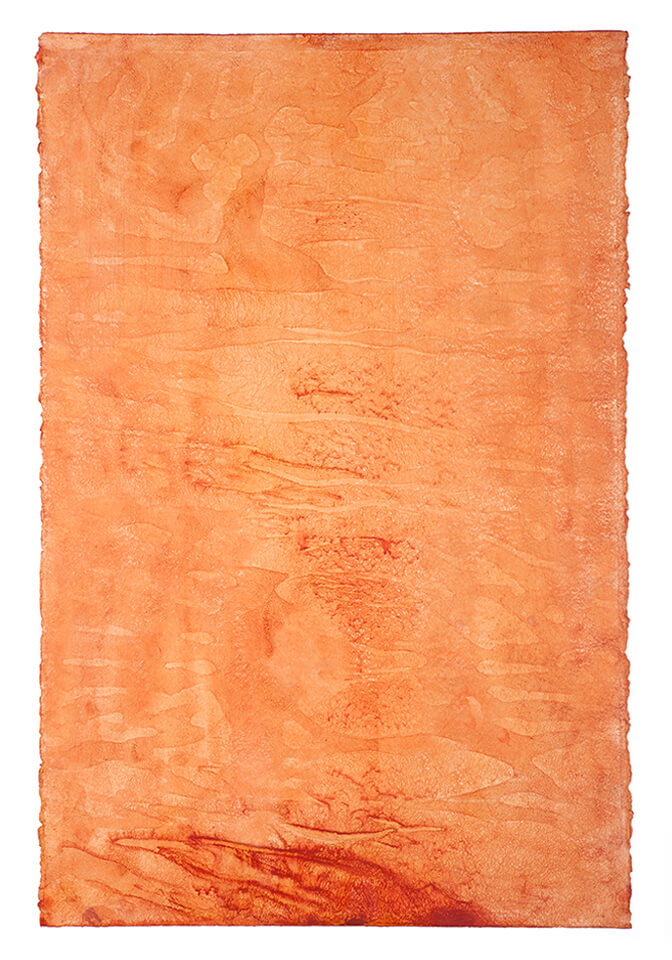
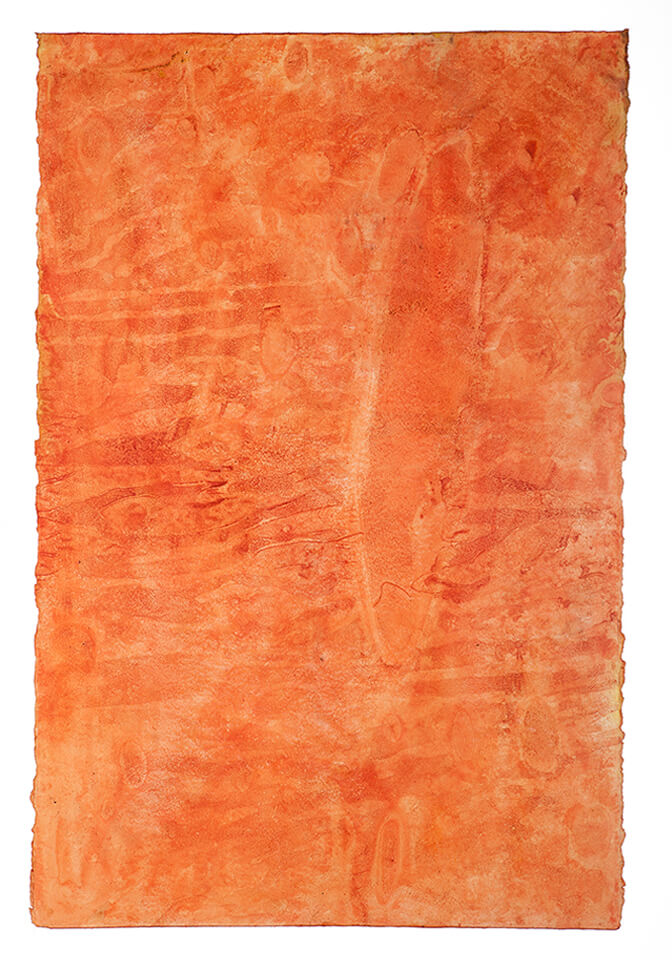
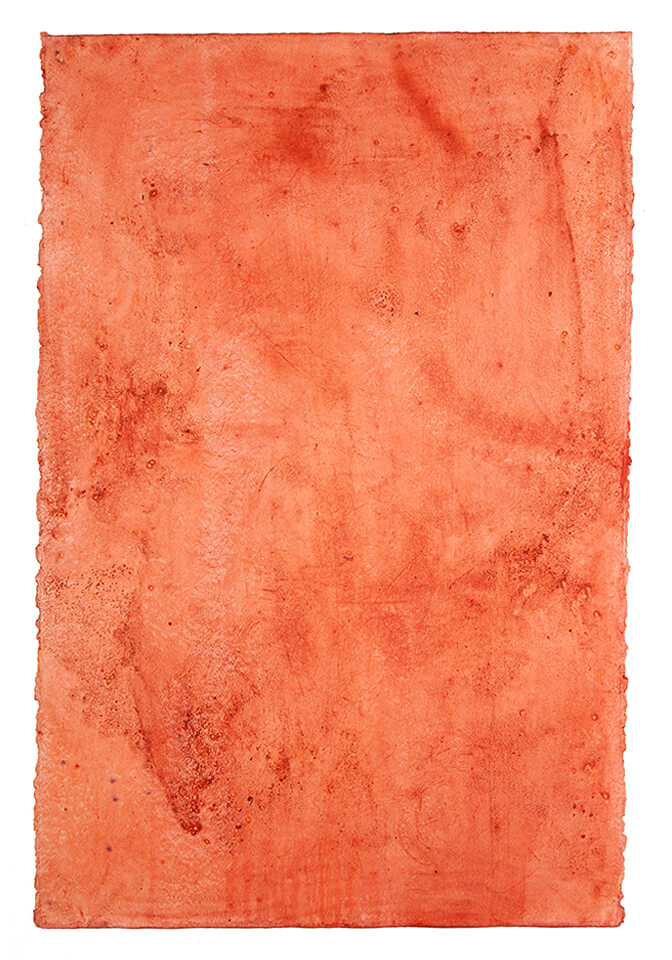
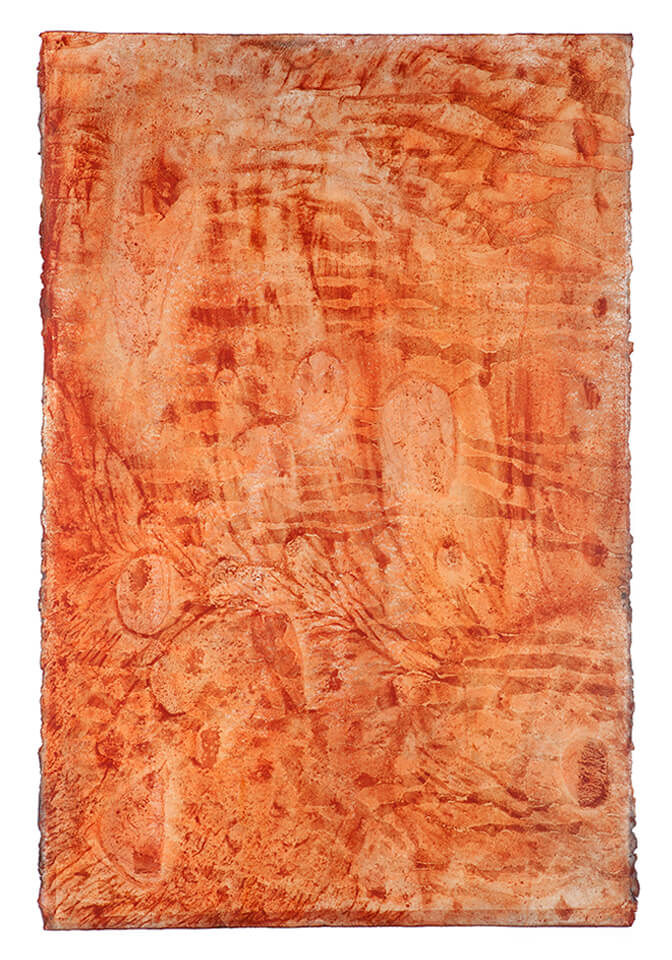
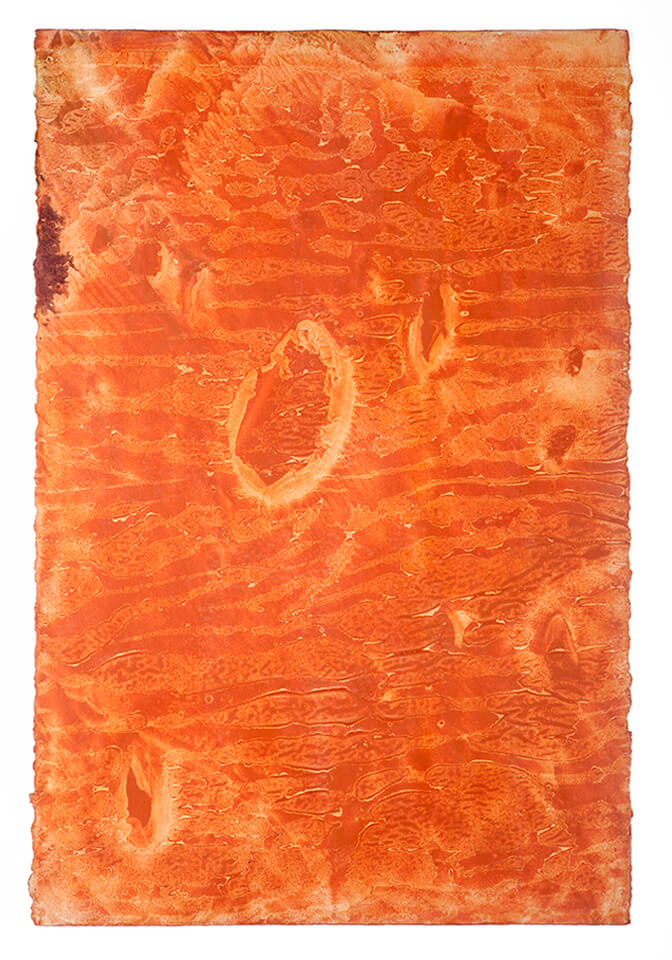
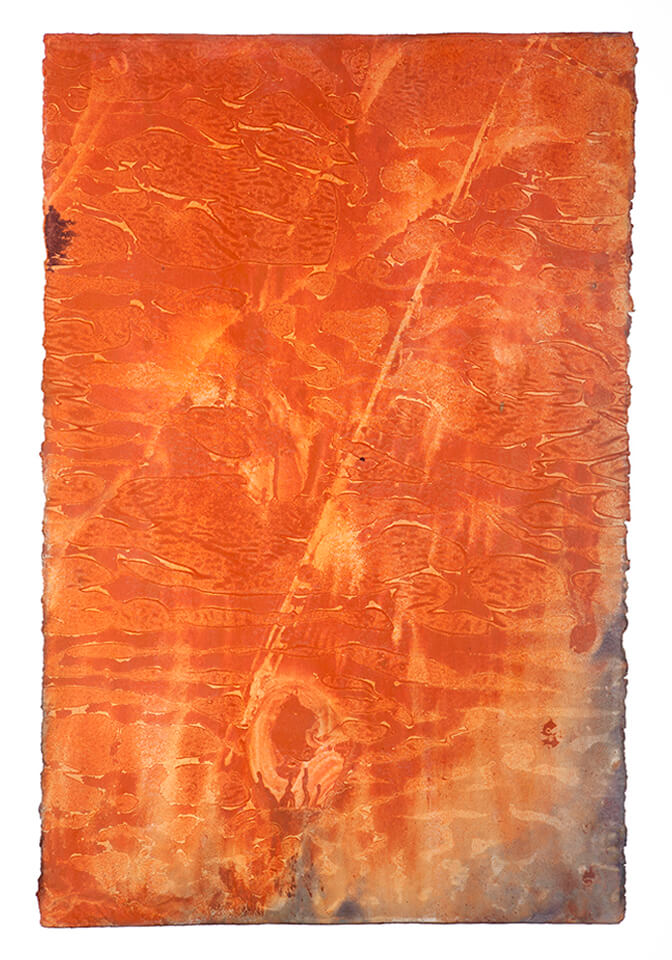
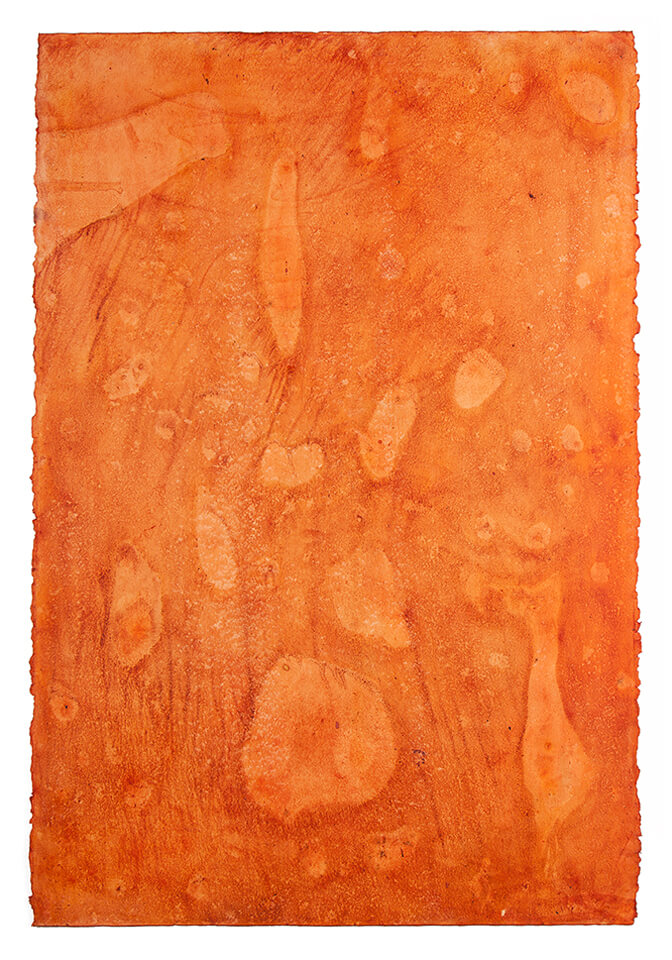
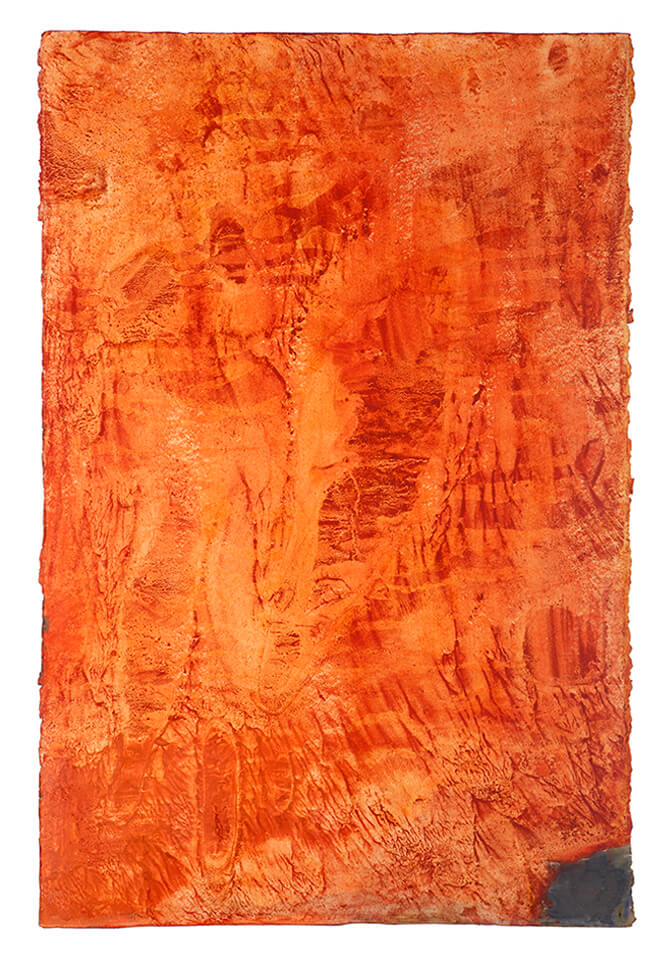
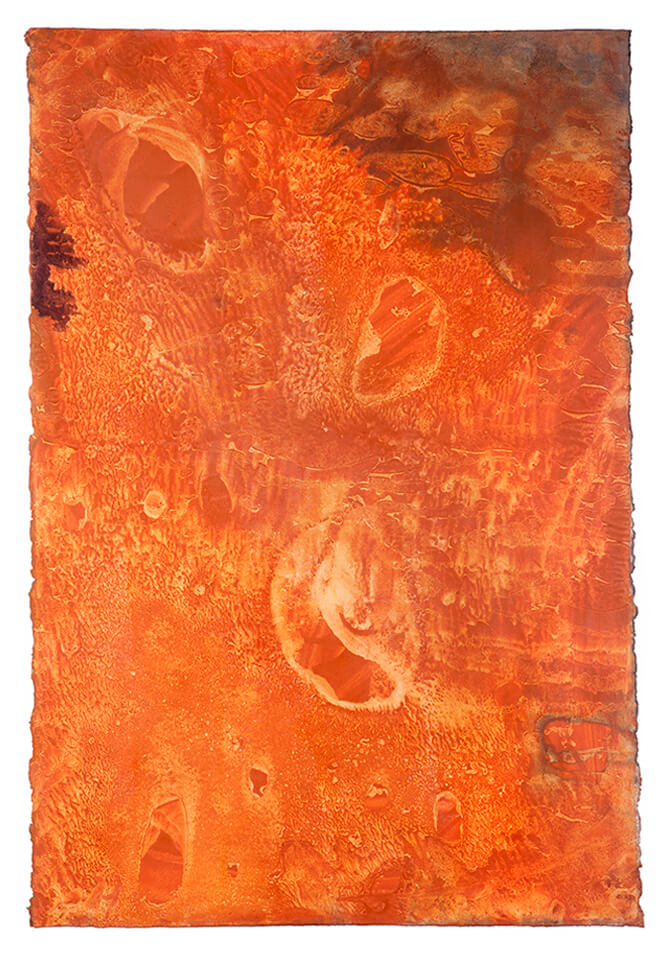
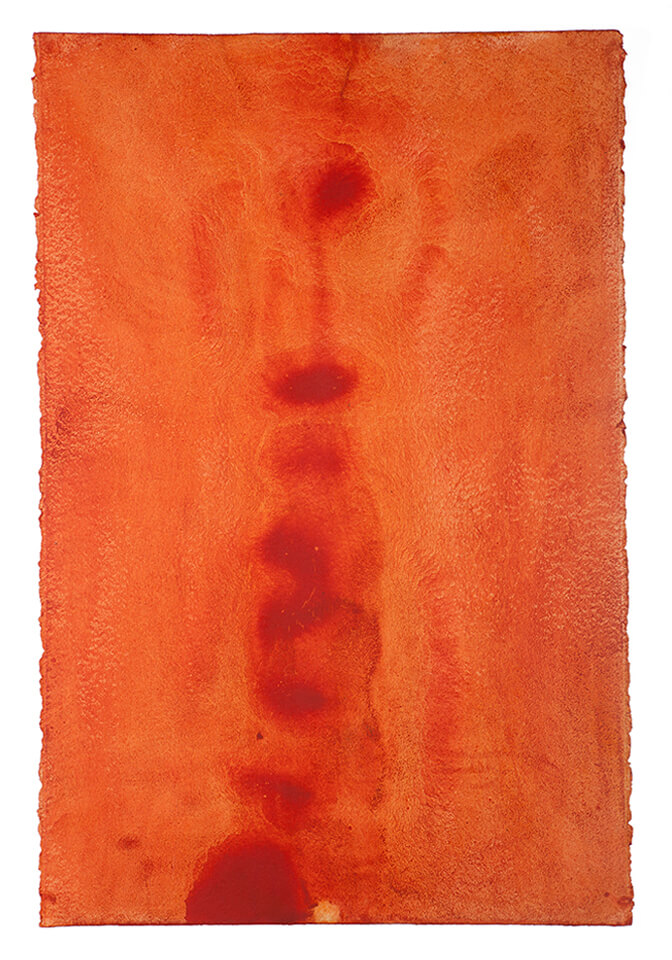
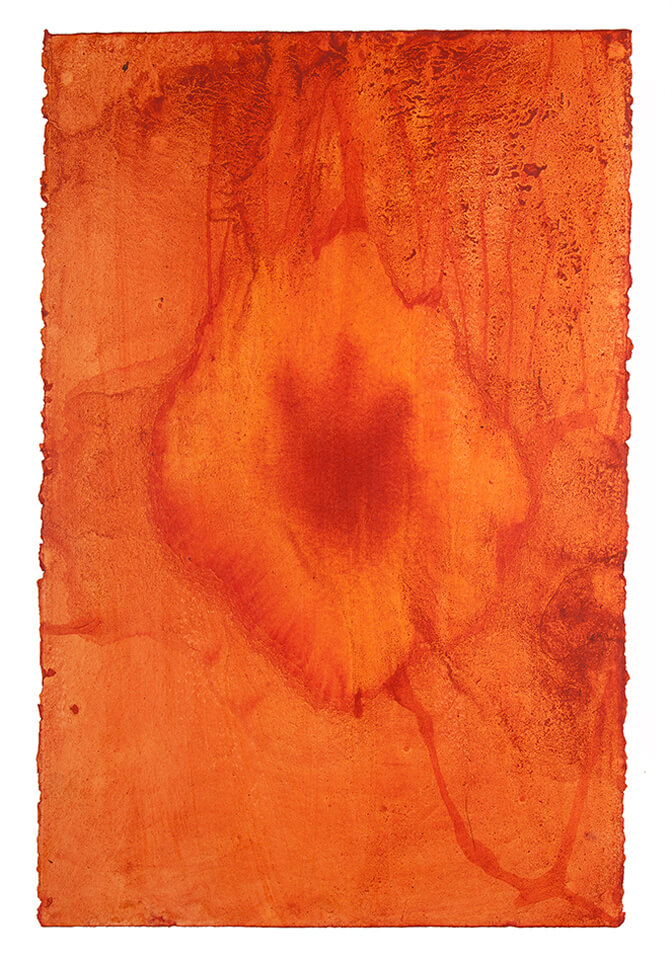
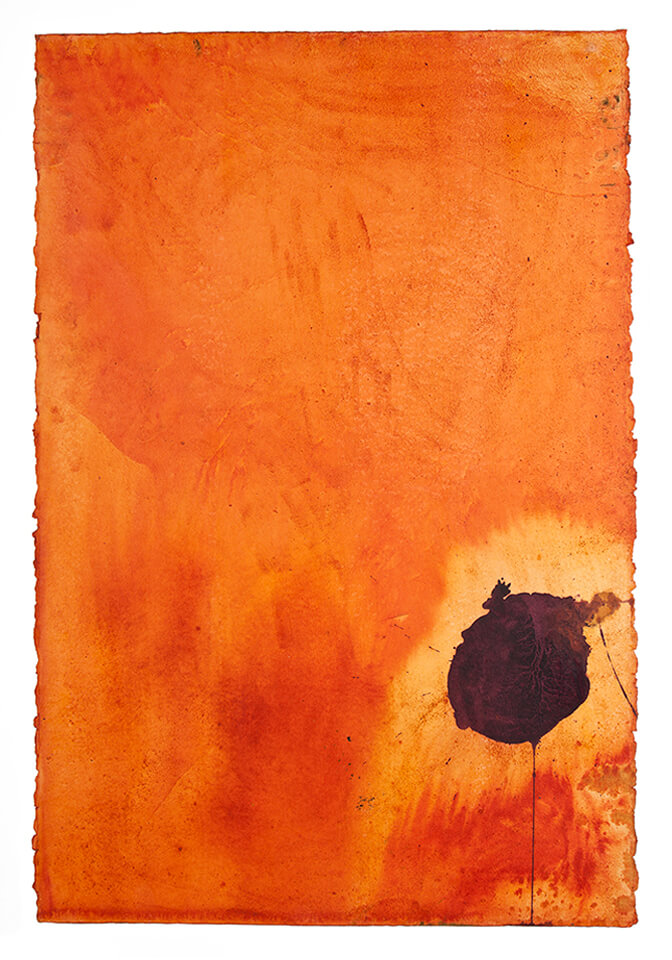
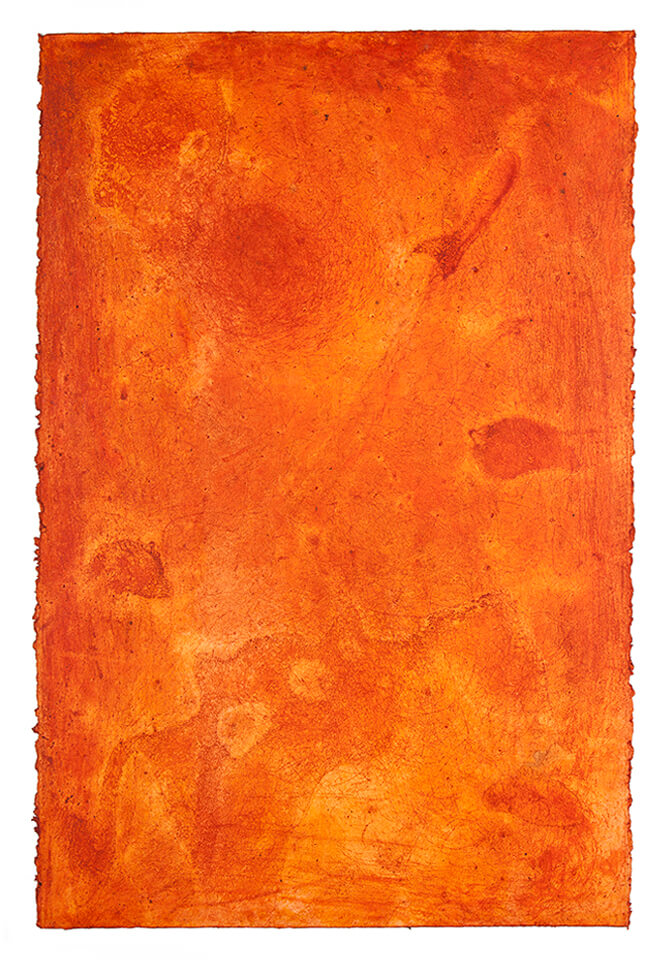
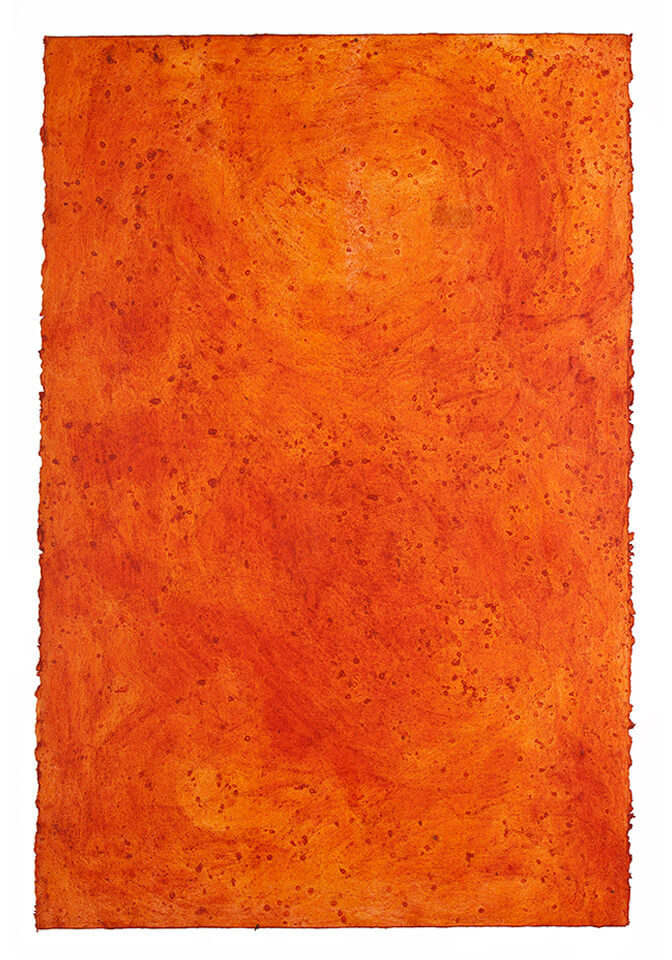
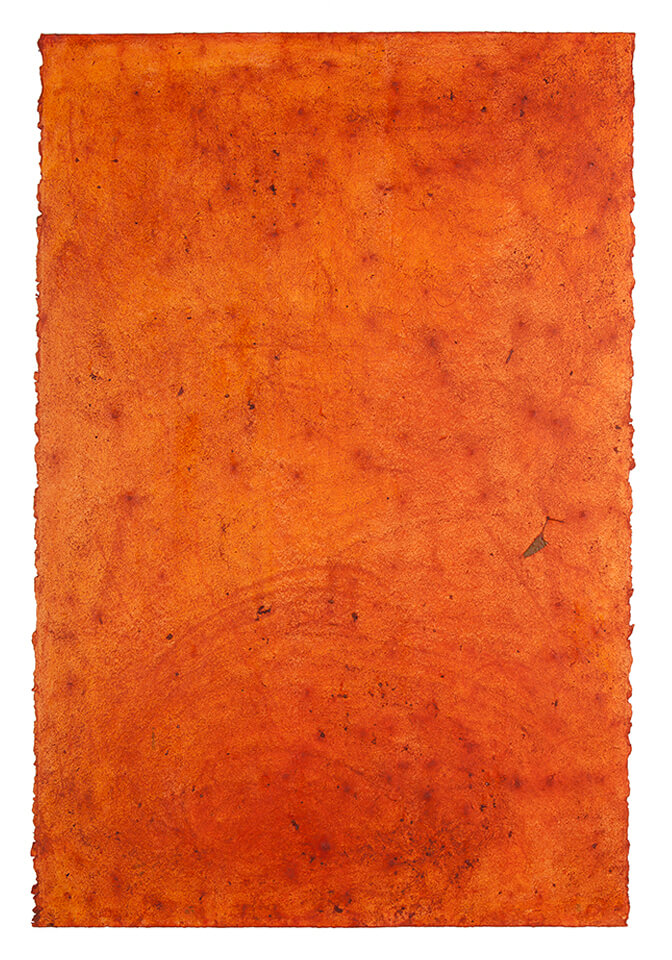
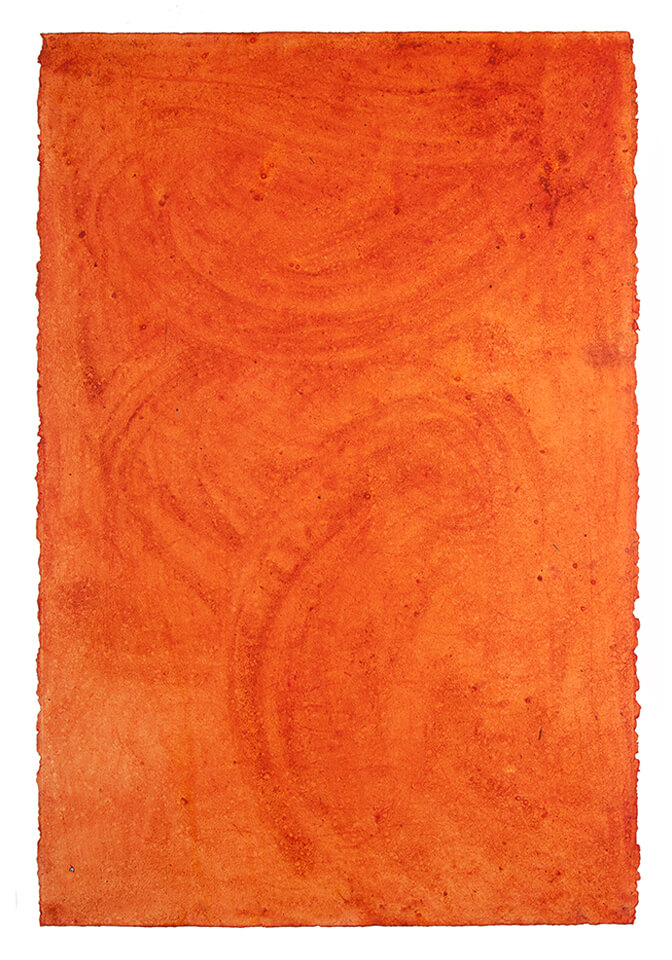
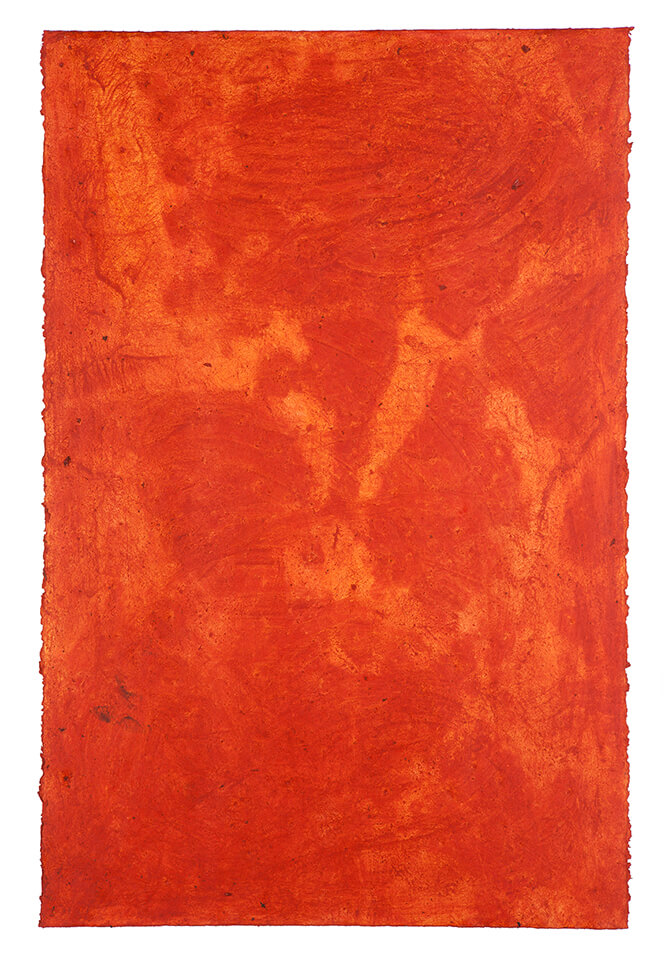
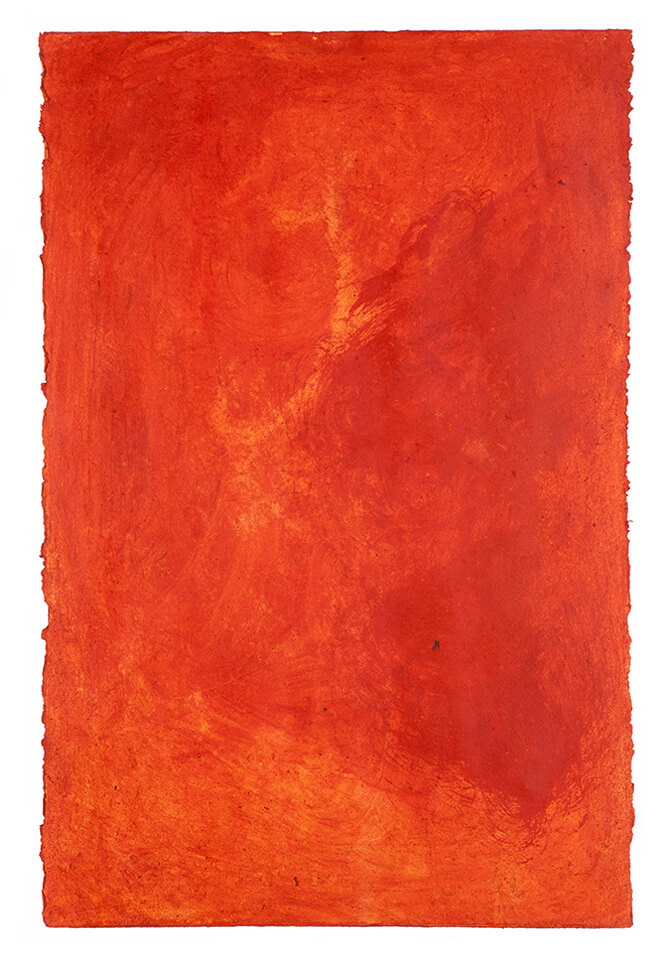
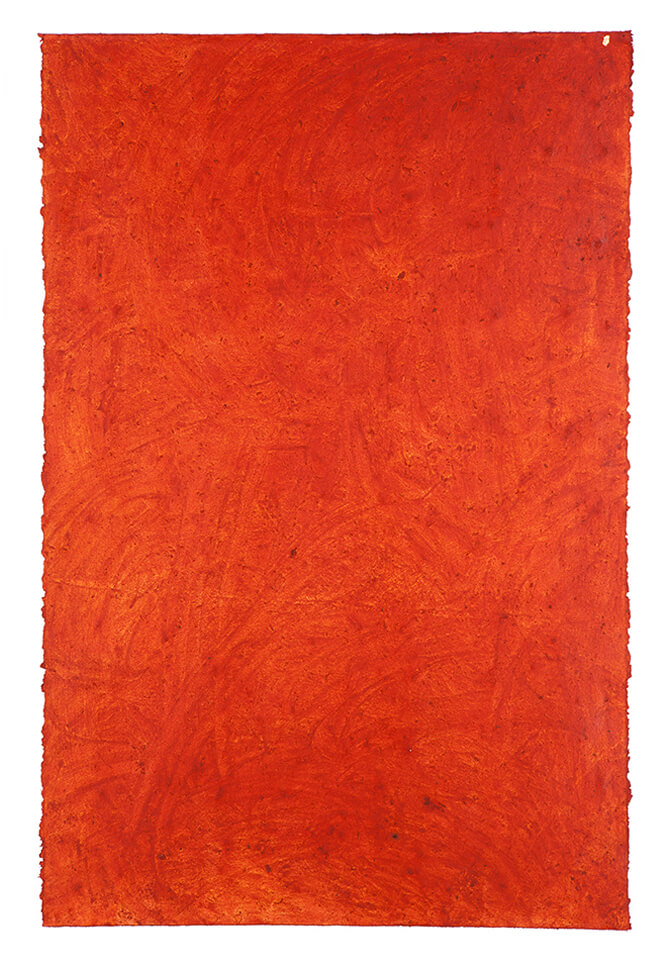
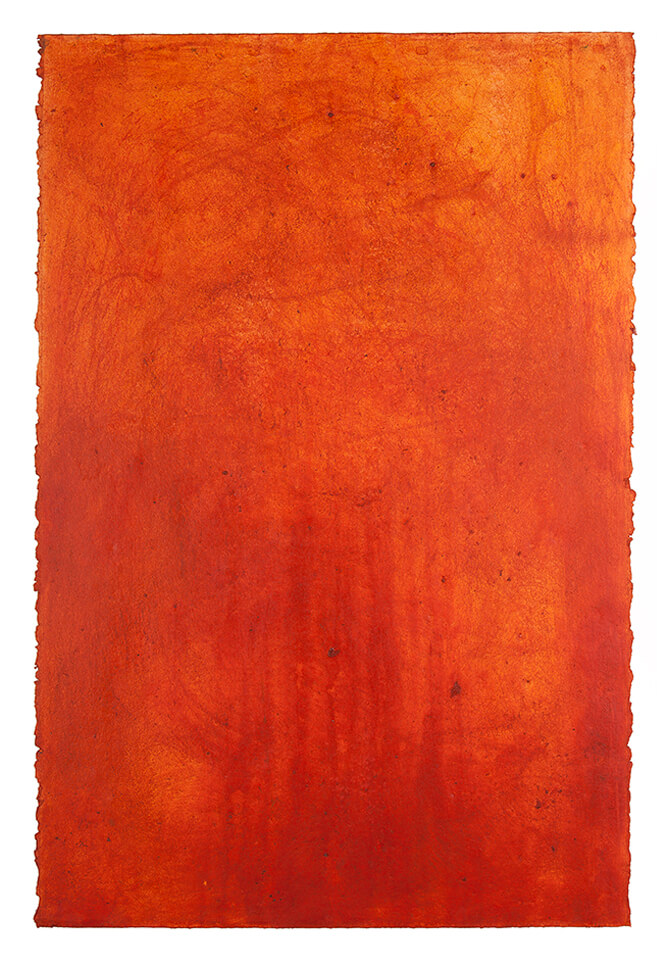
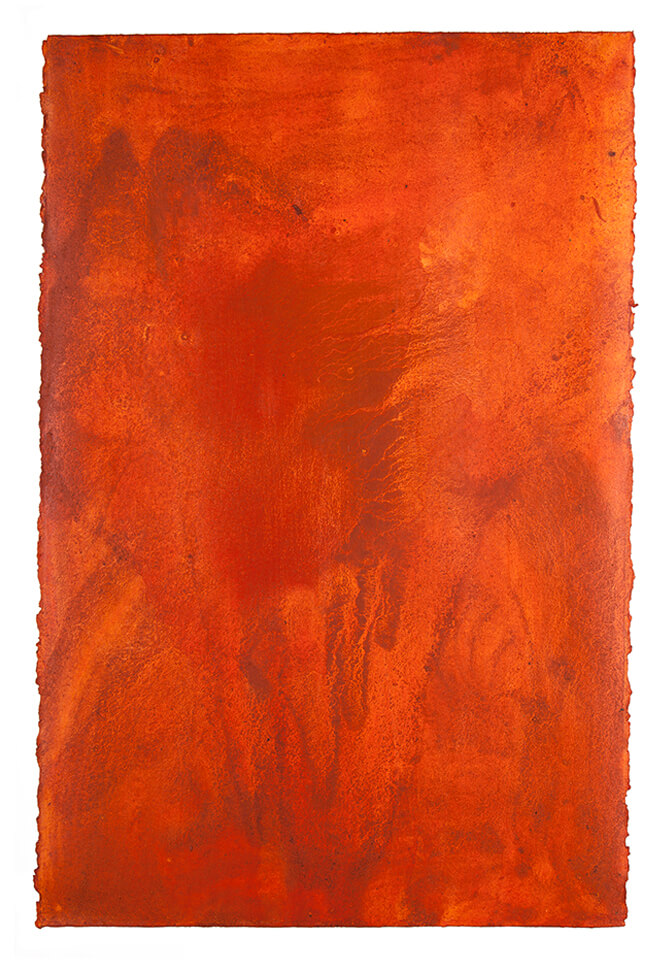
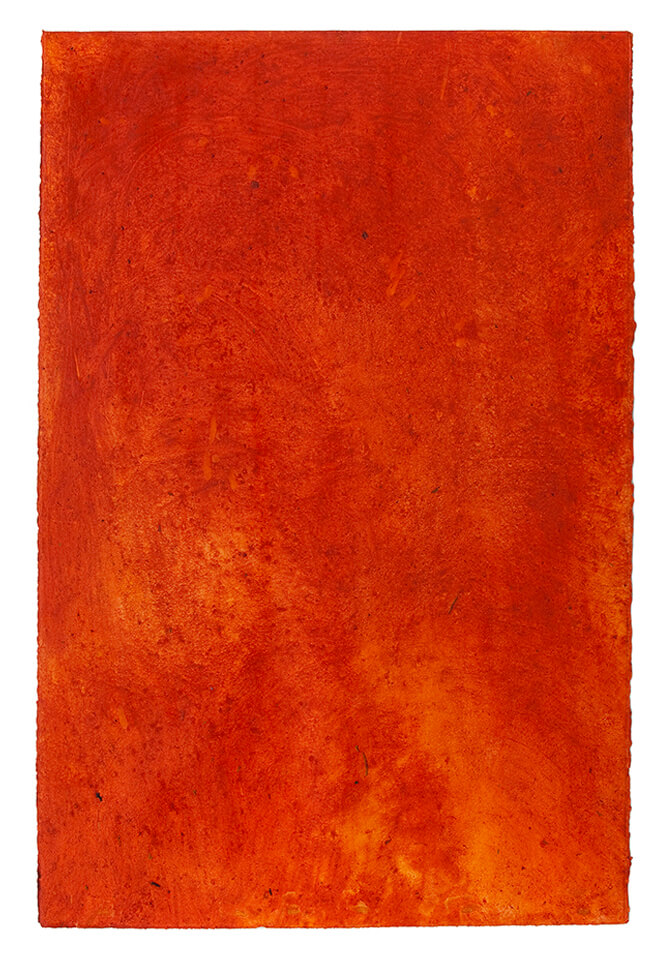
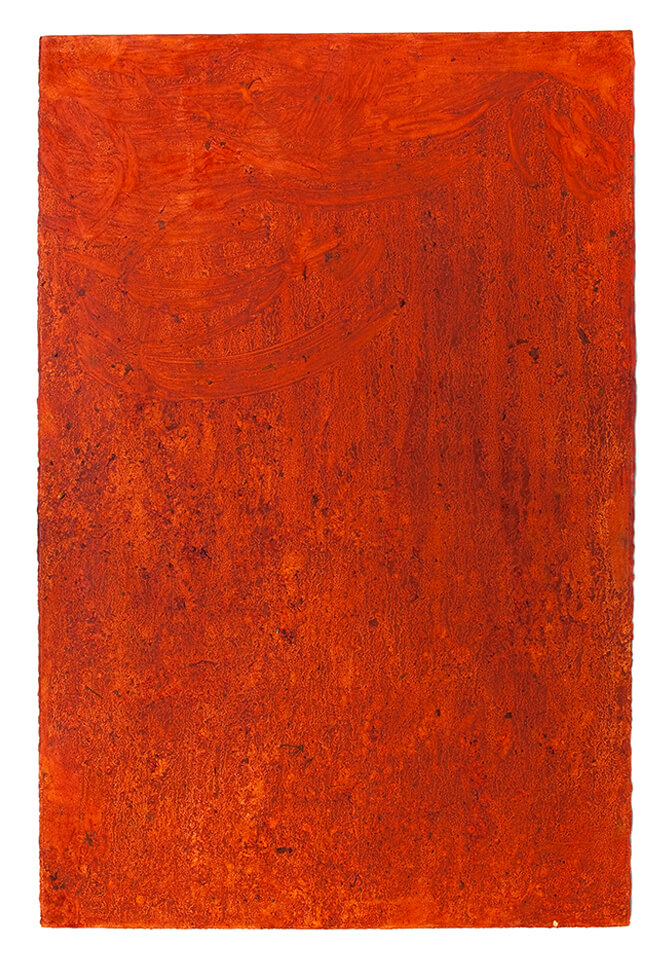
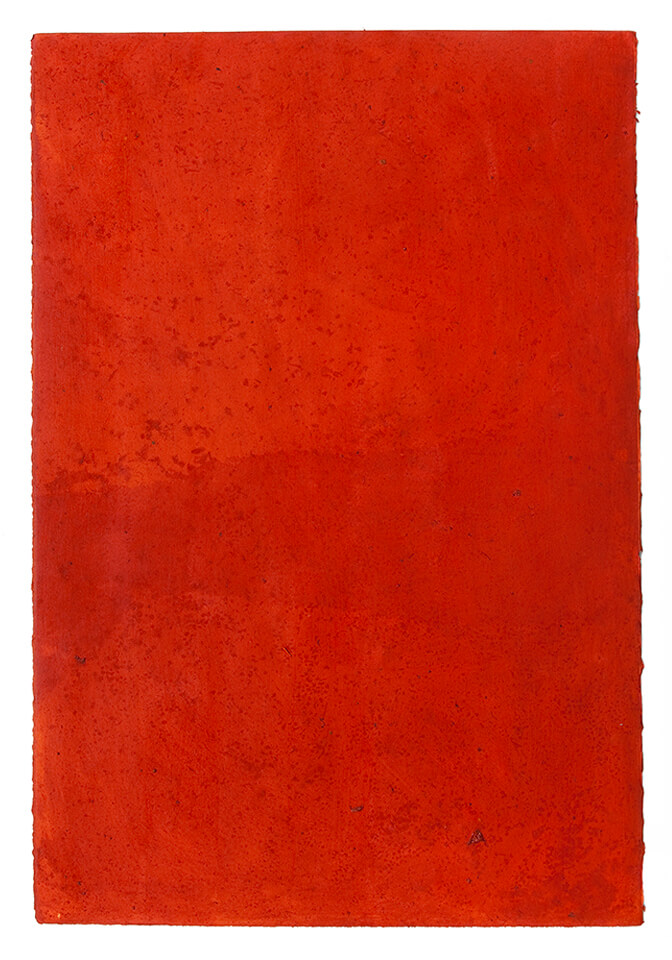
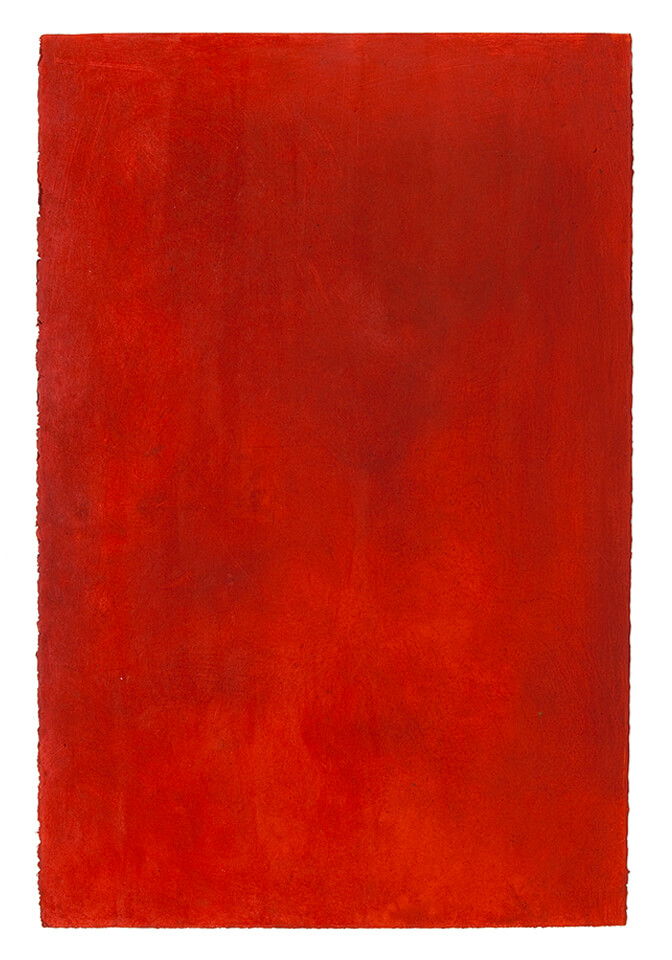
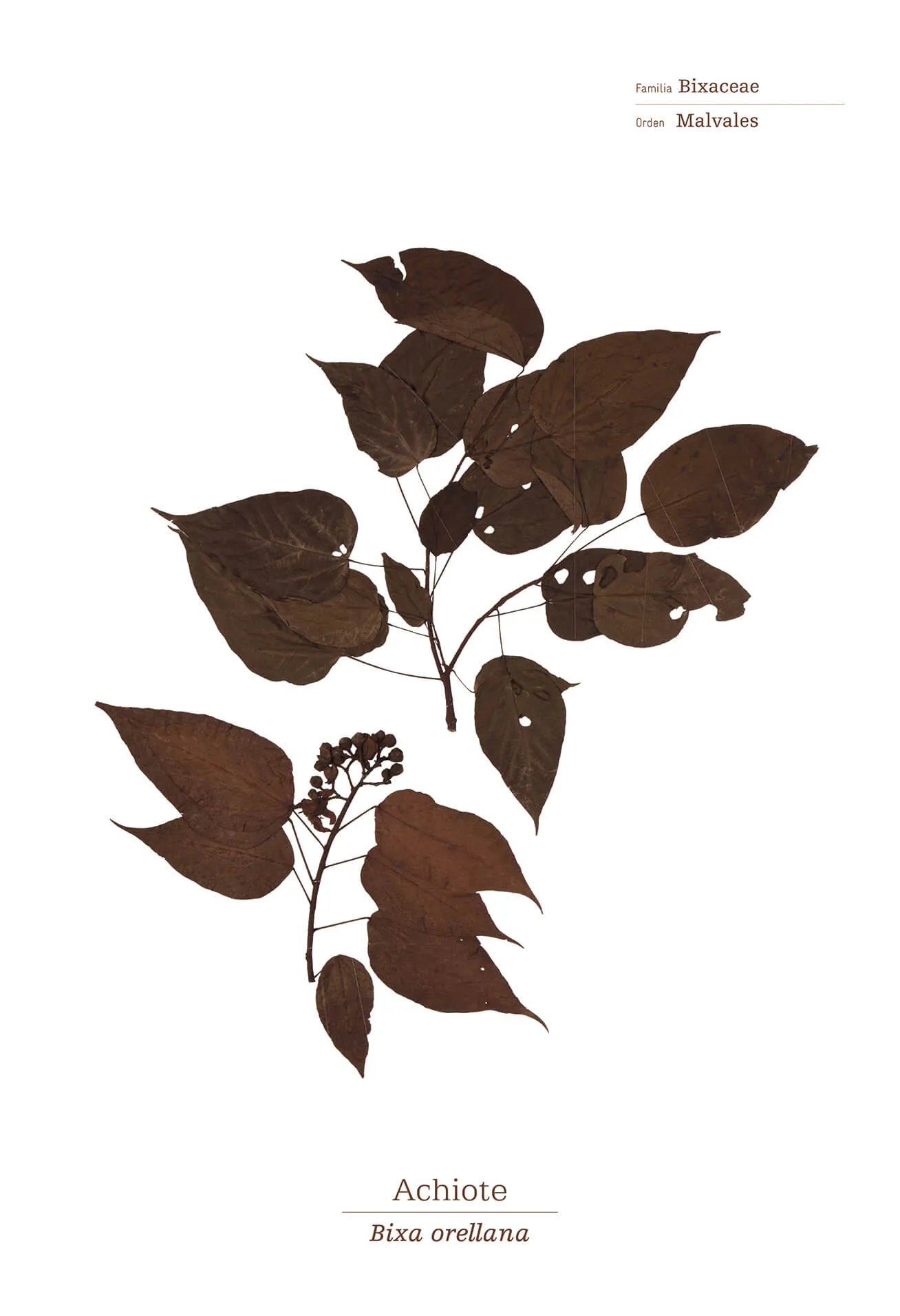
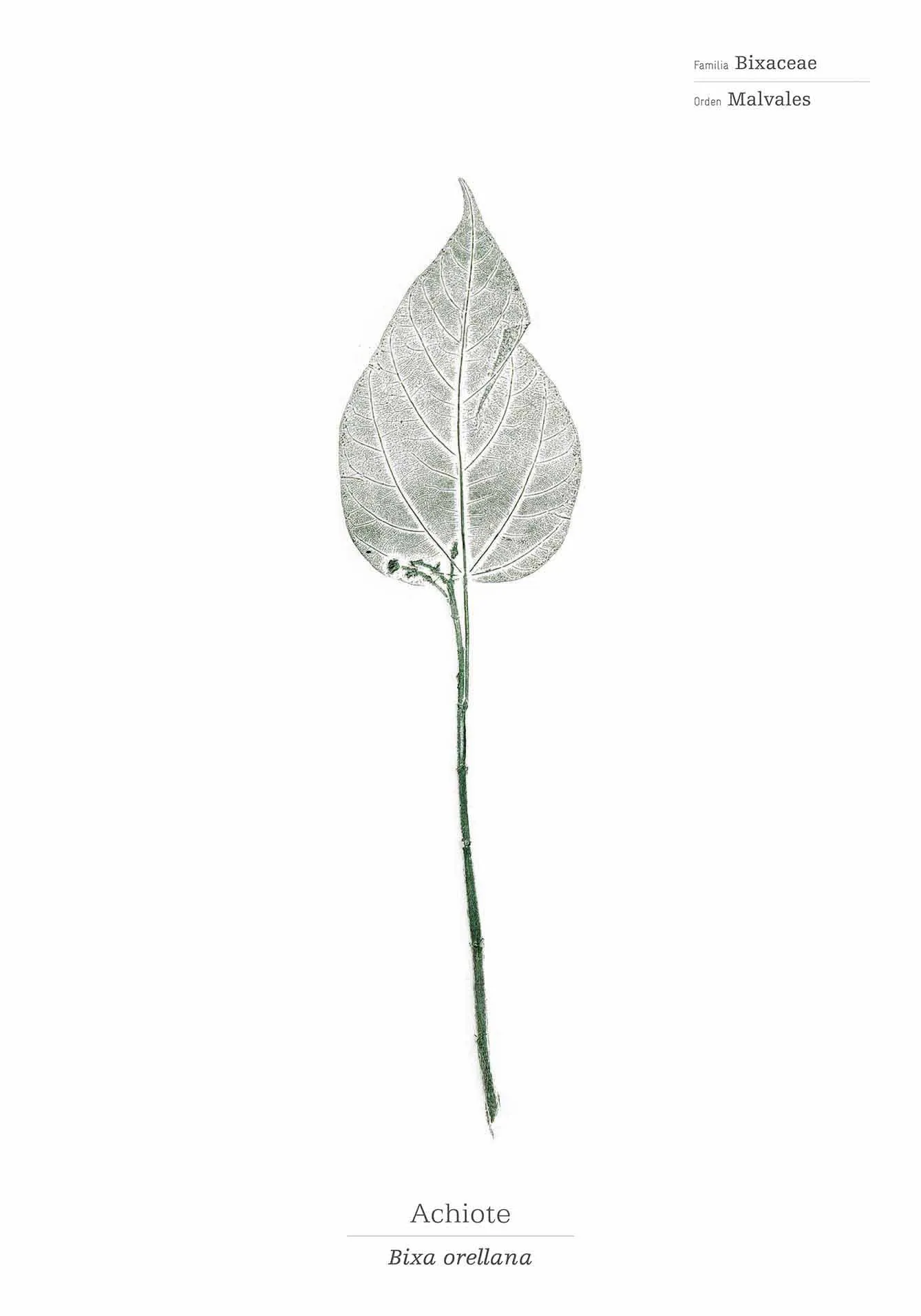
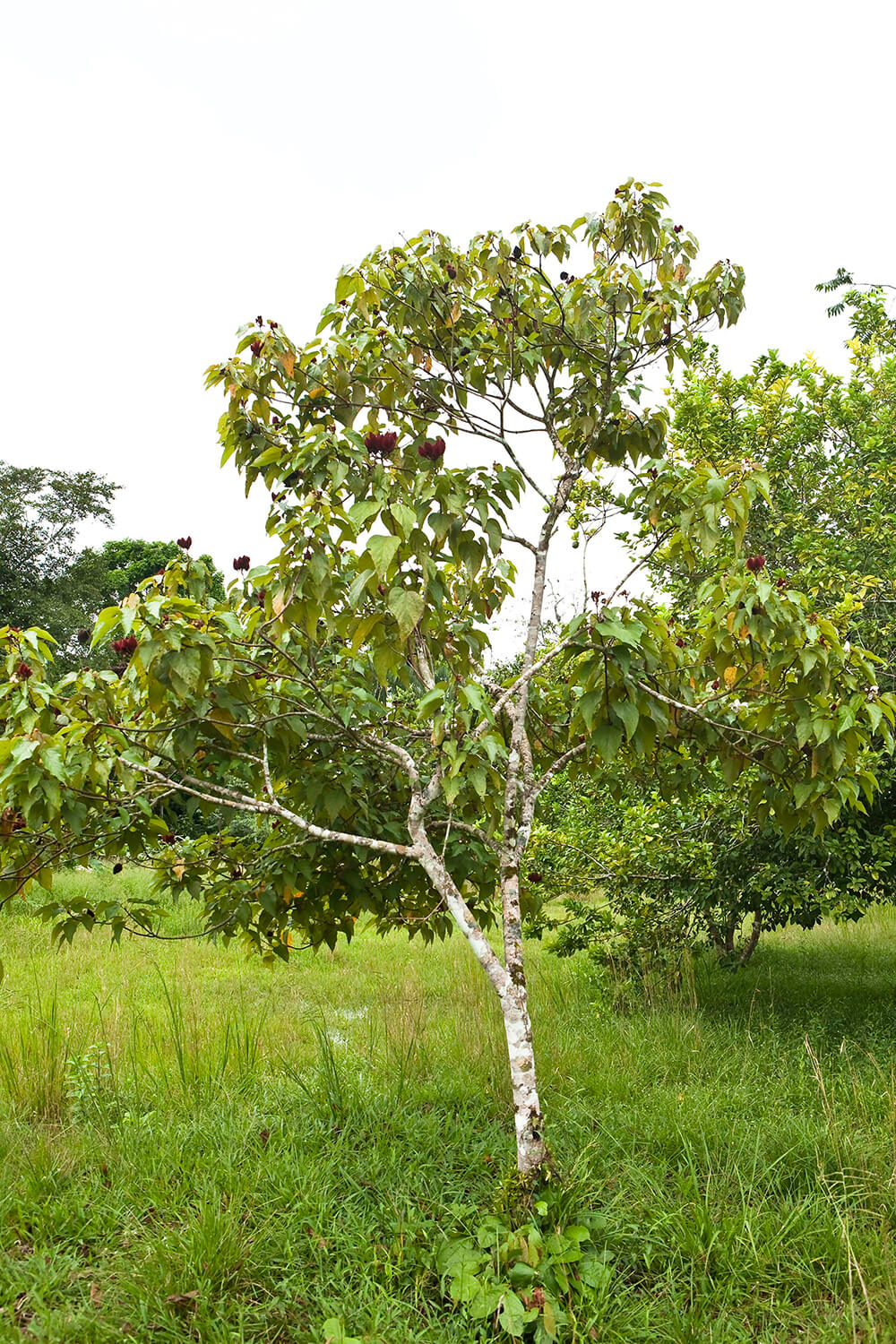

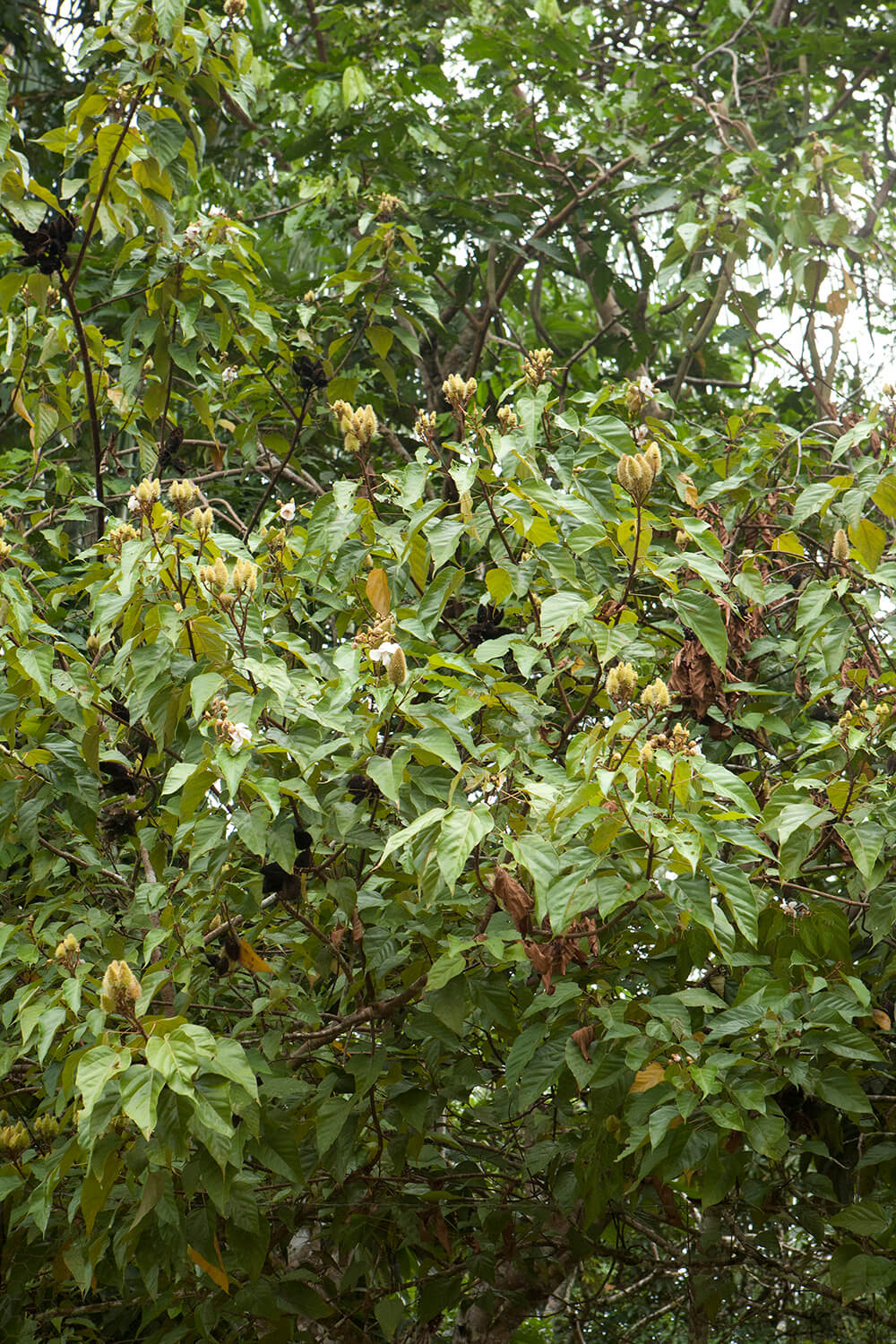
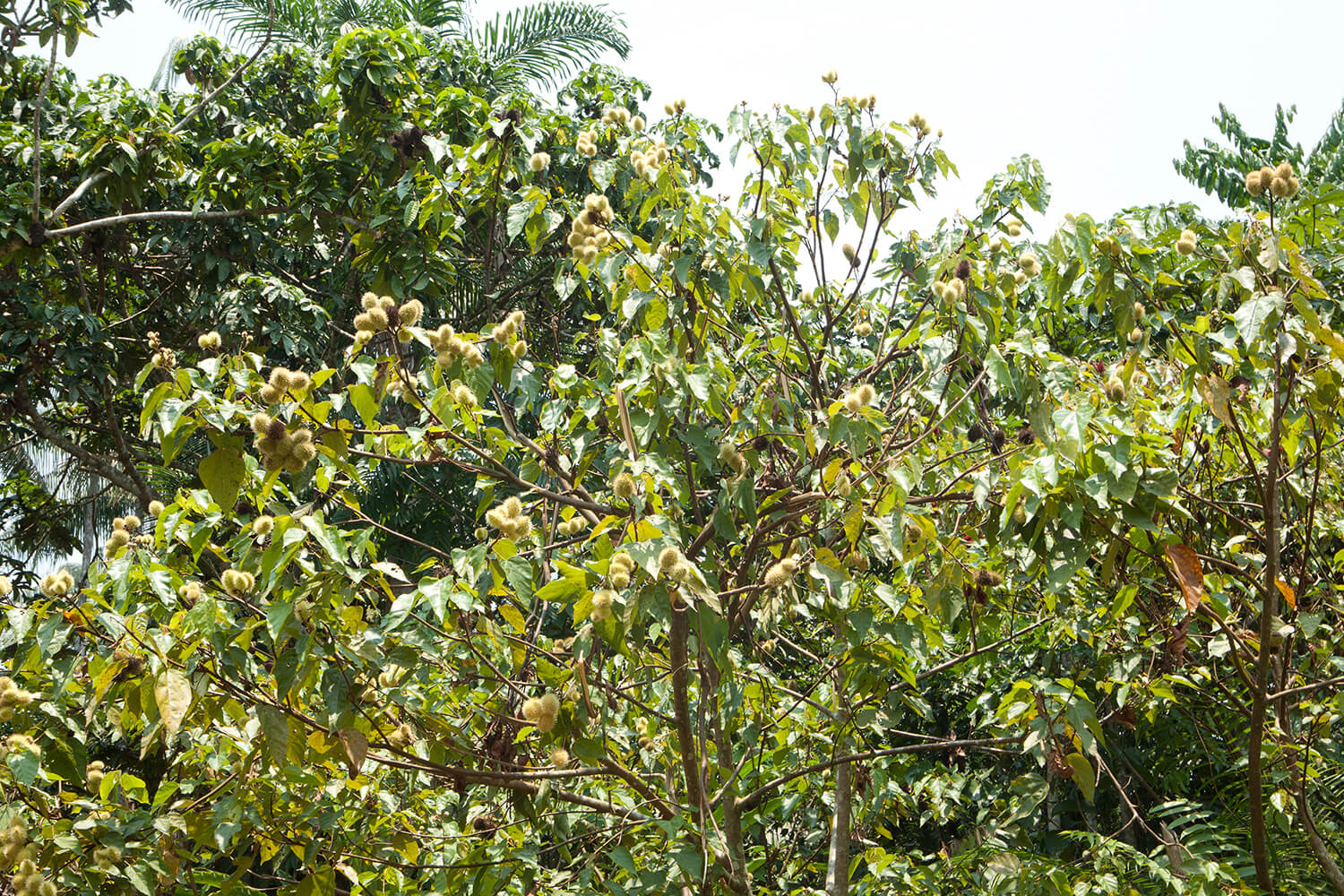
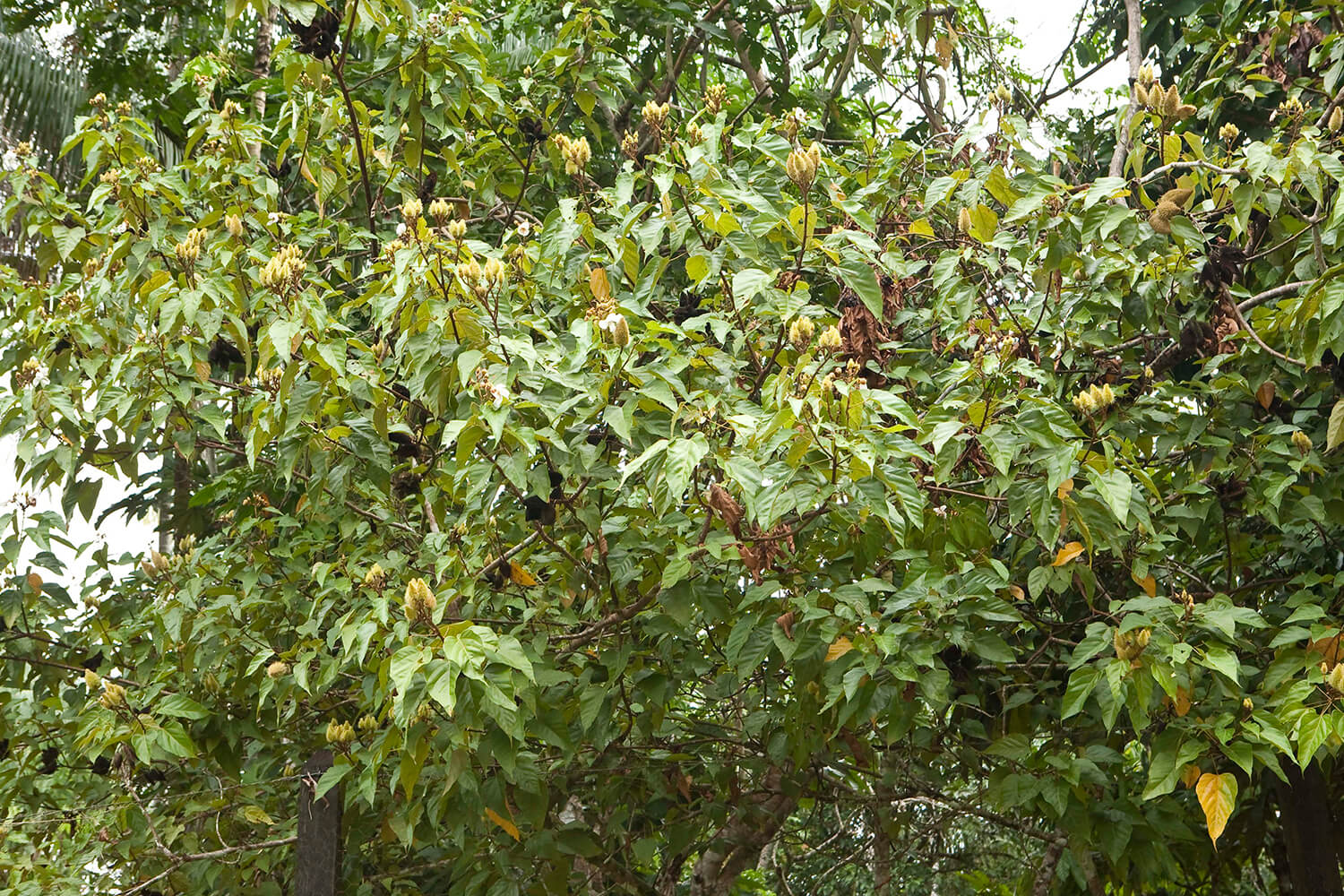
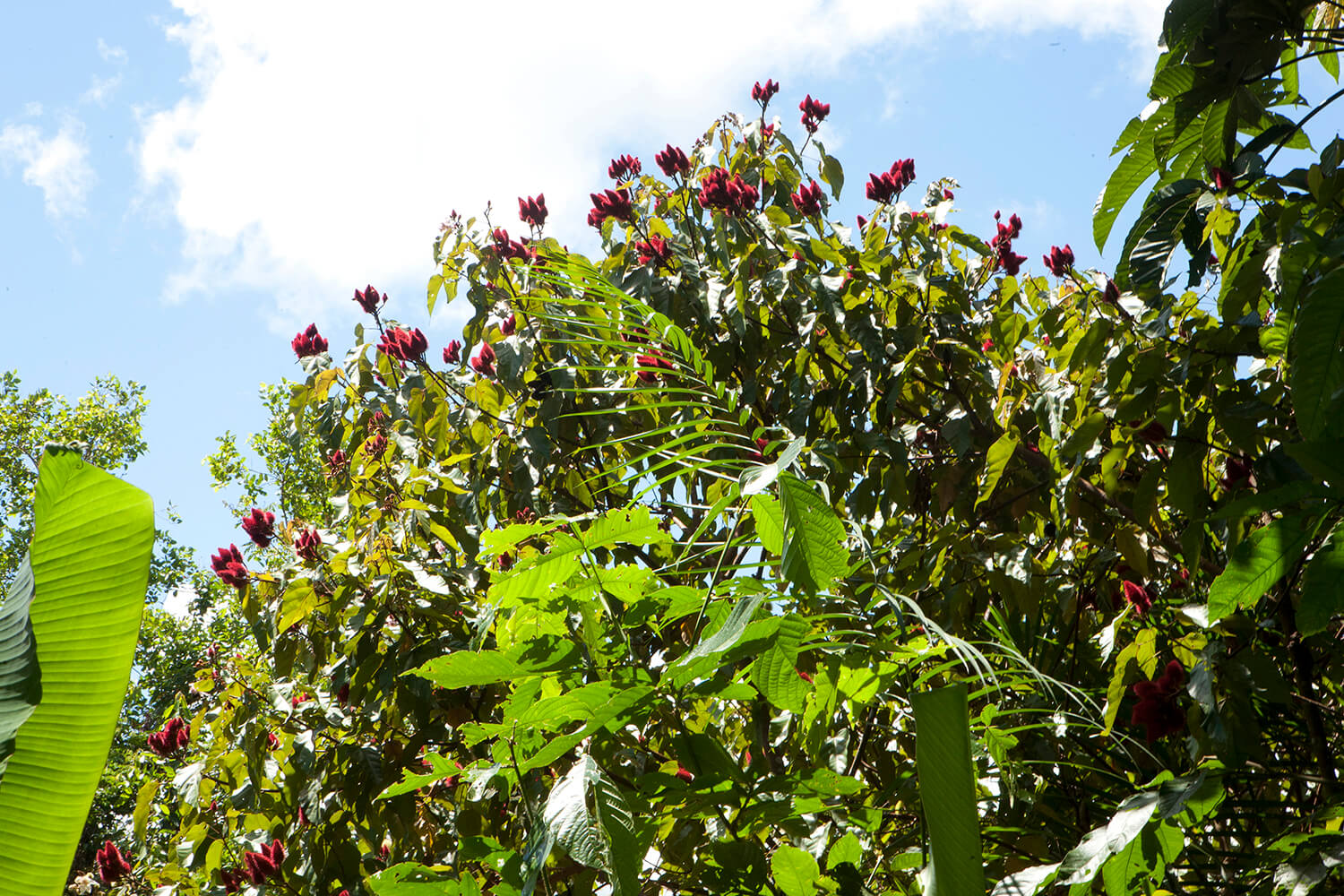
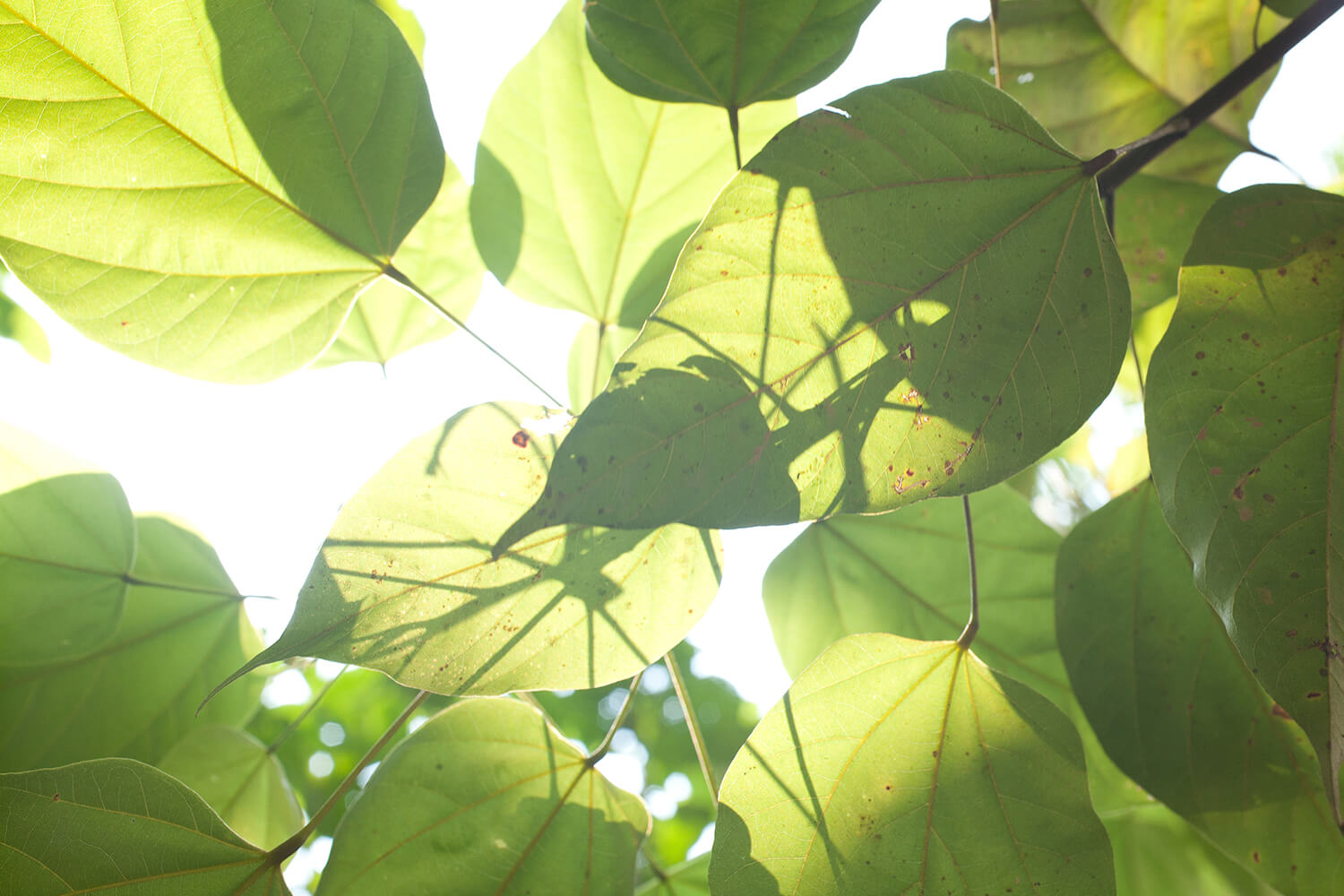
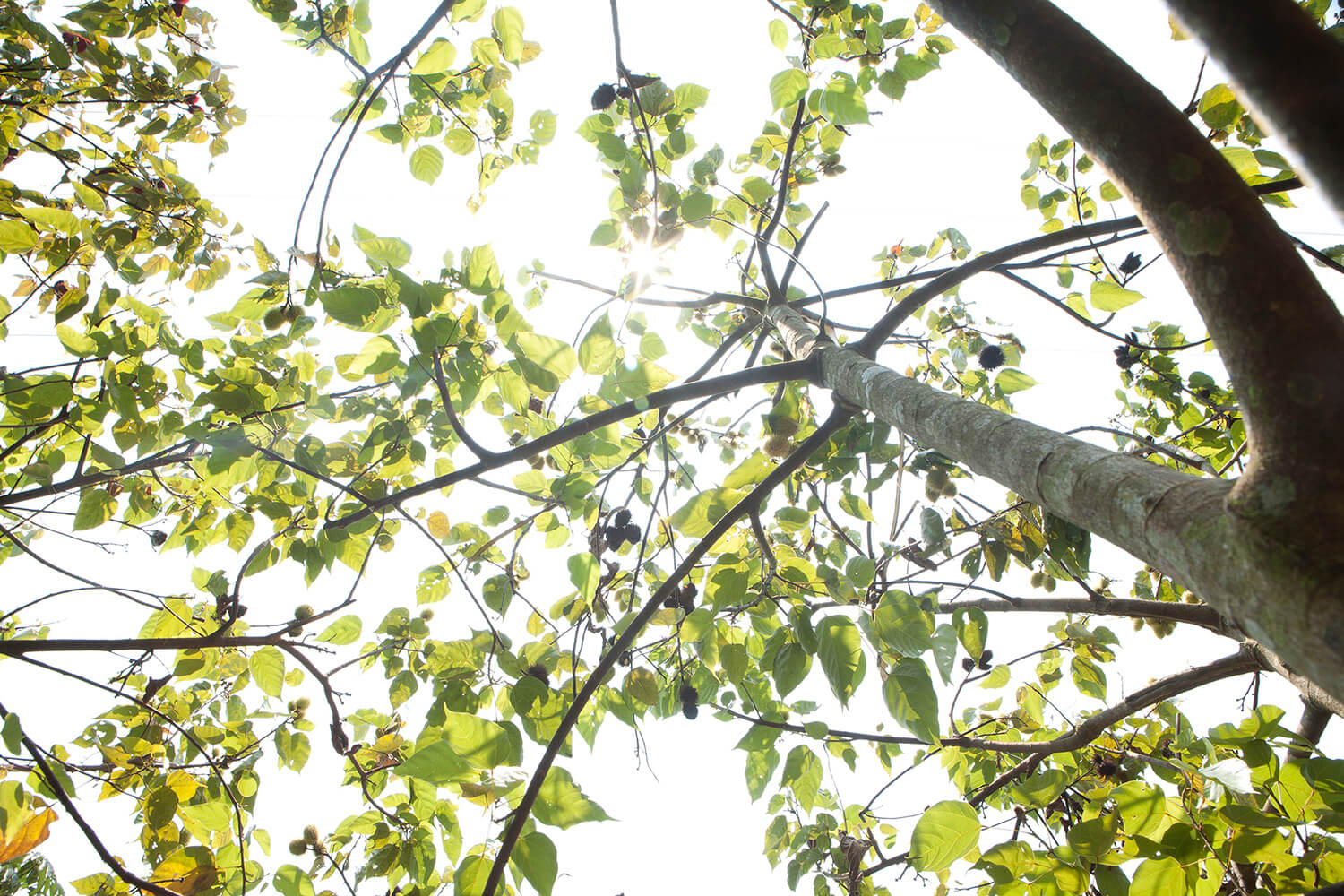
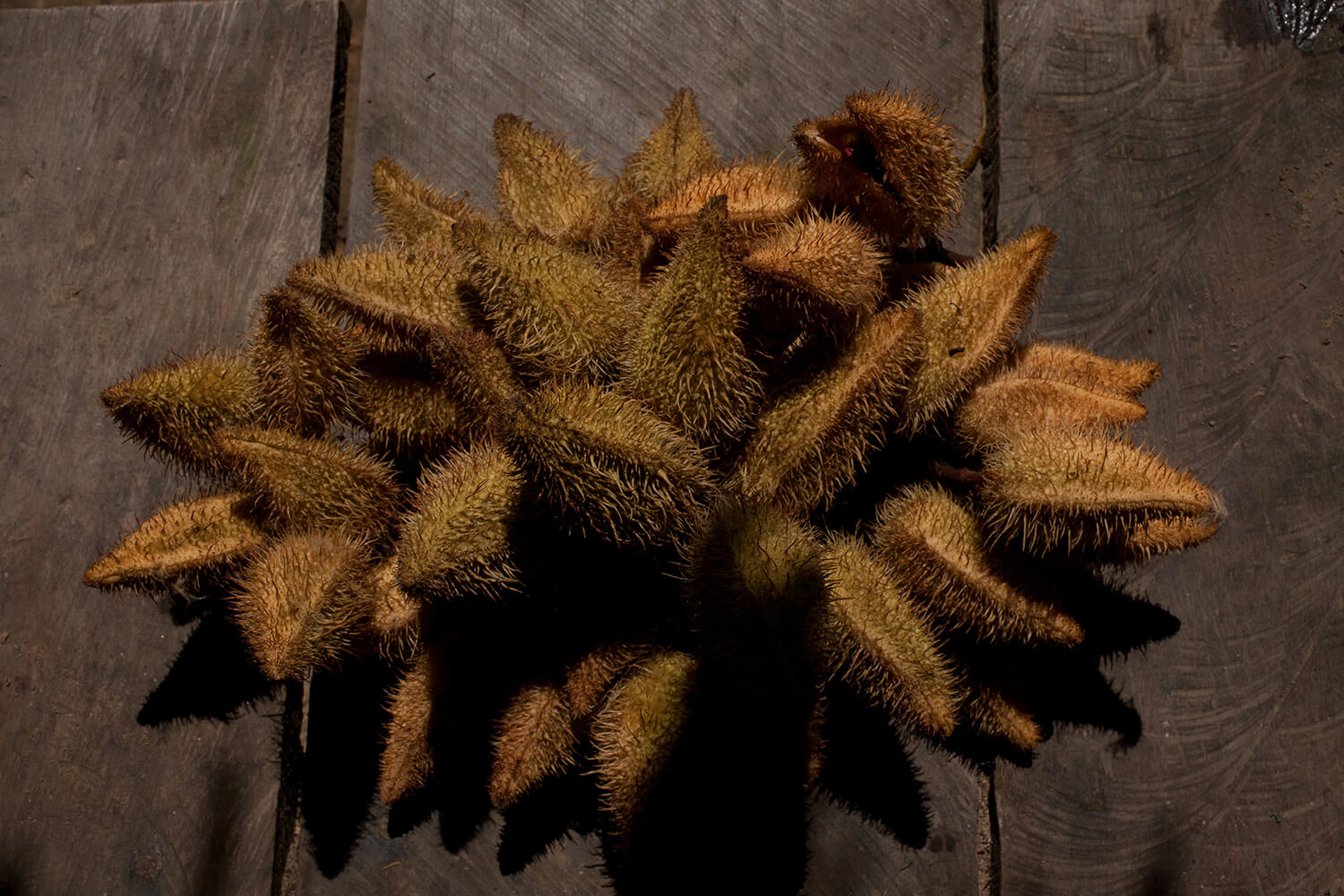

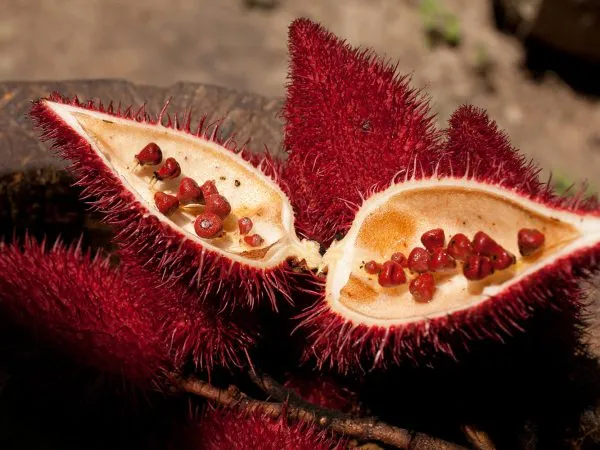
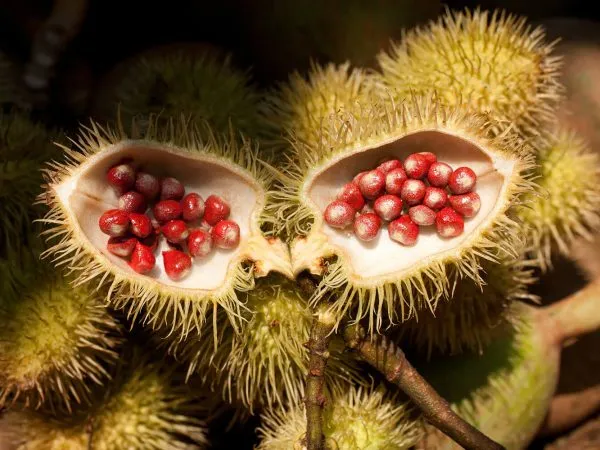
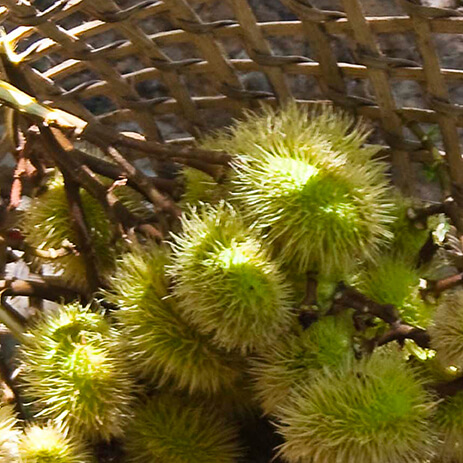
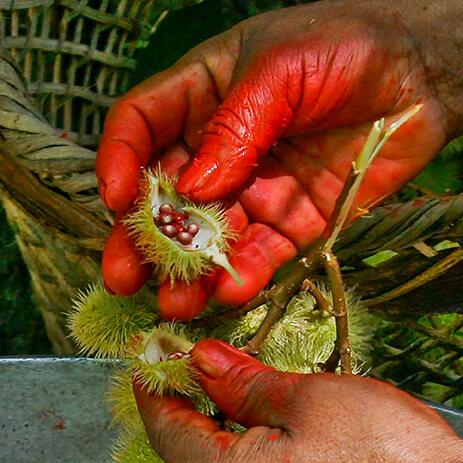
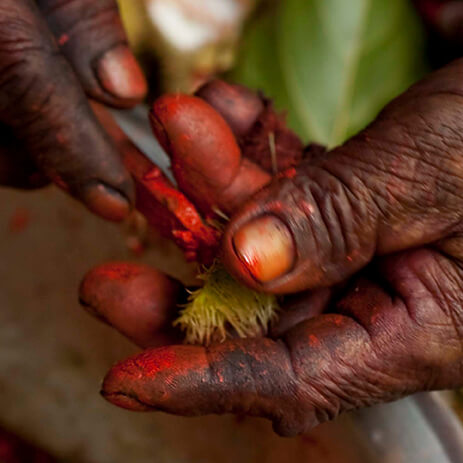

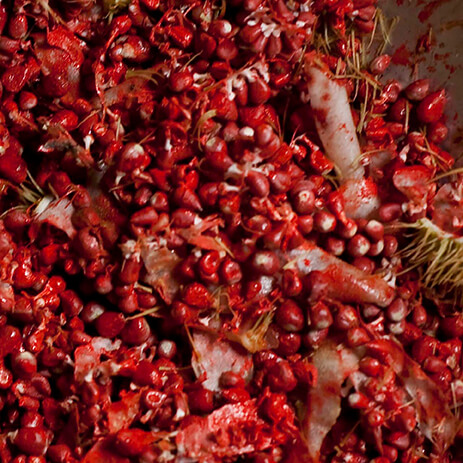
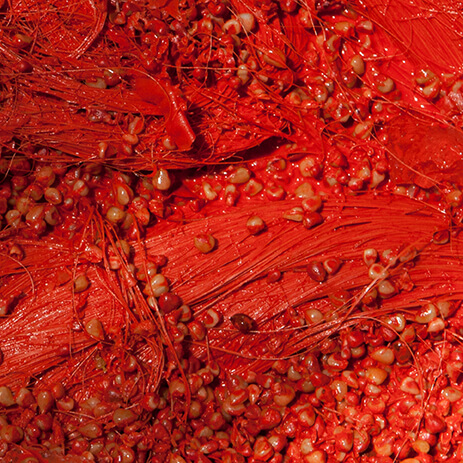

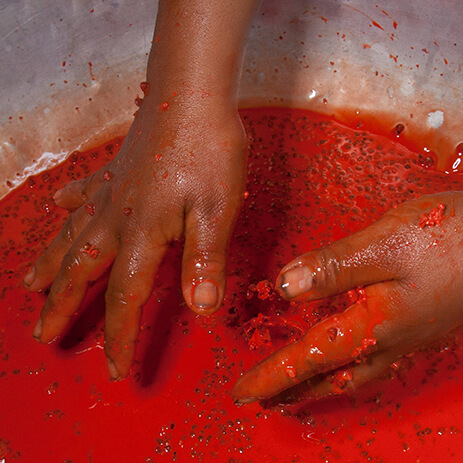
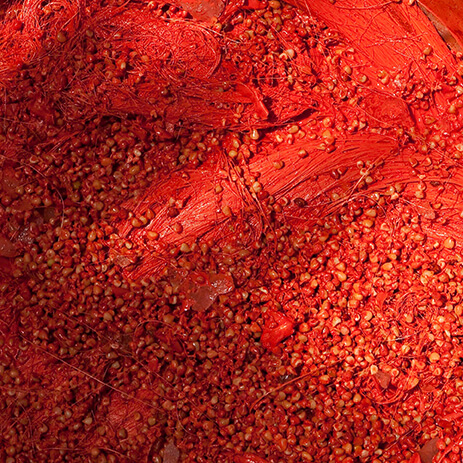
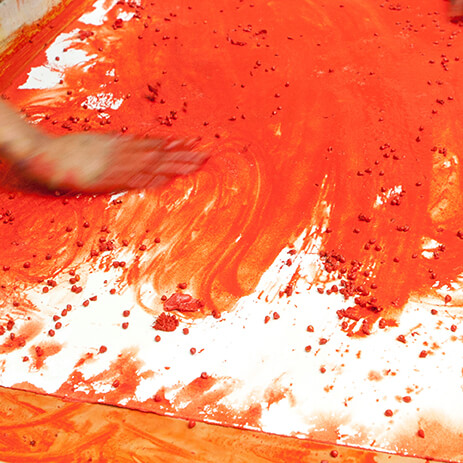
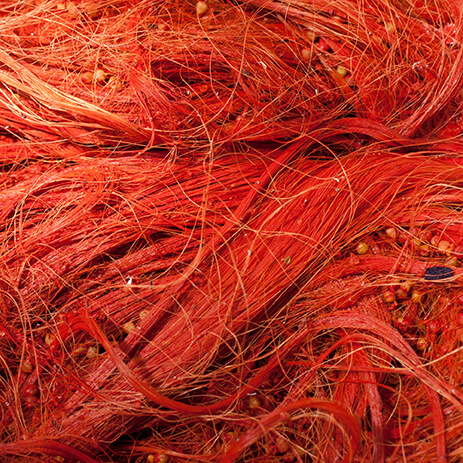
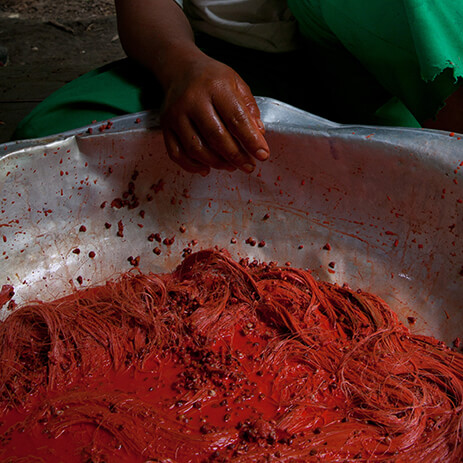
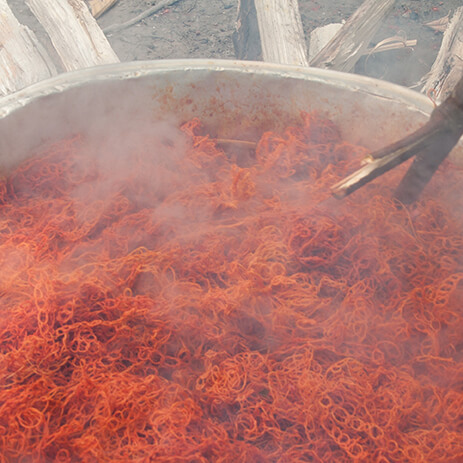
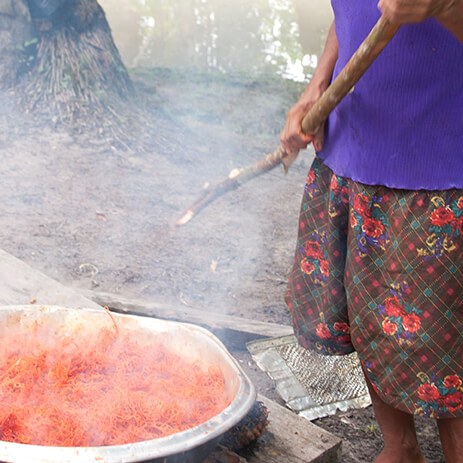
.jpg)
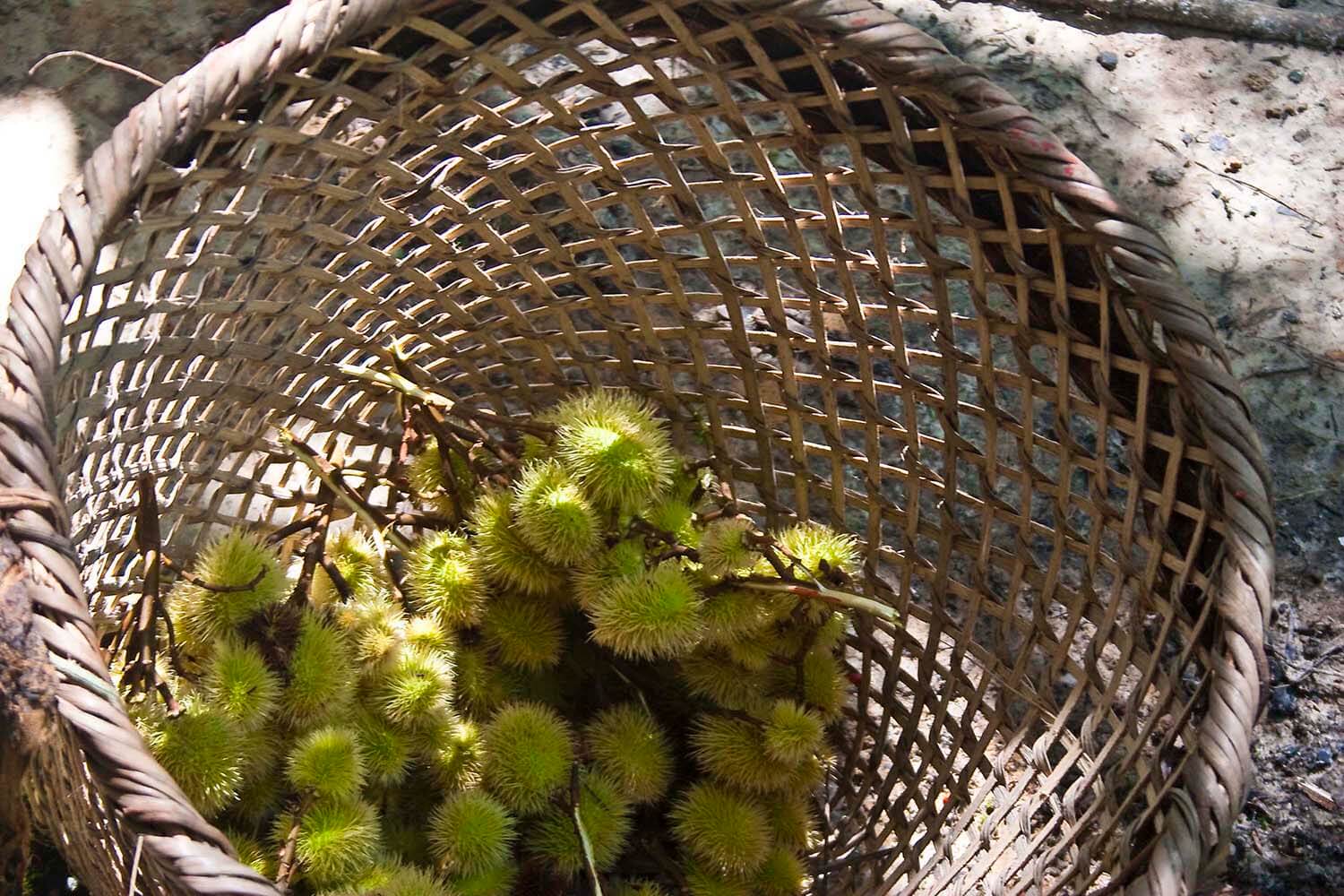

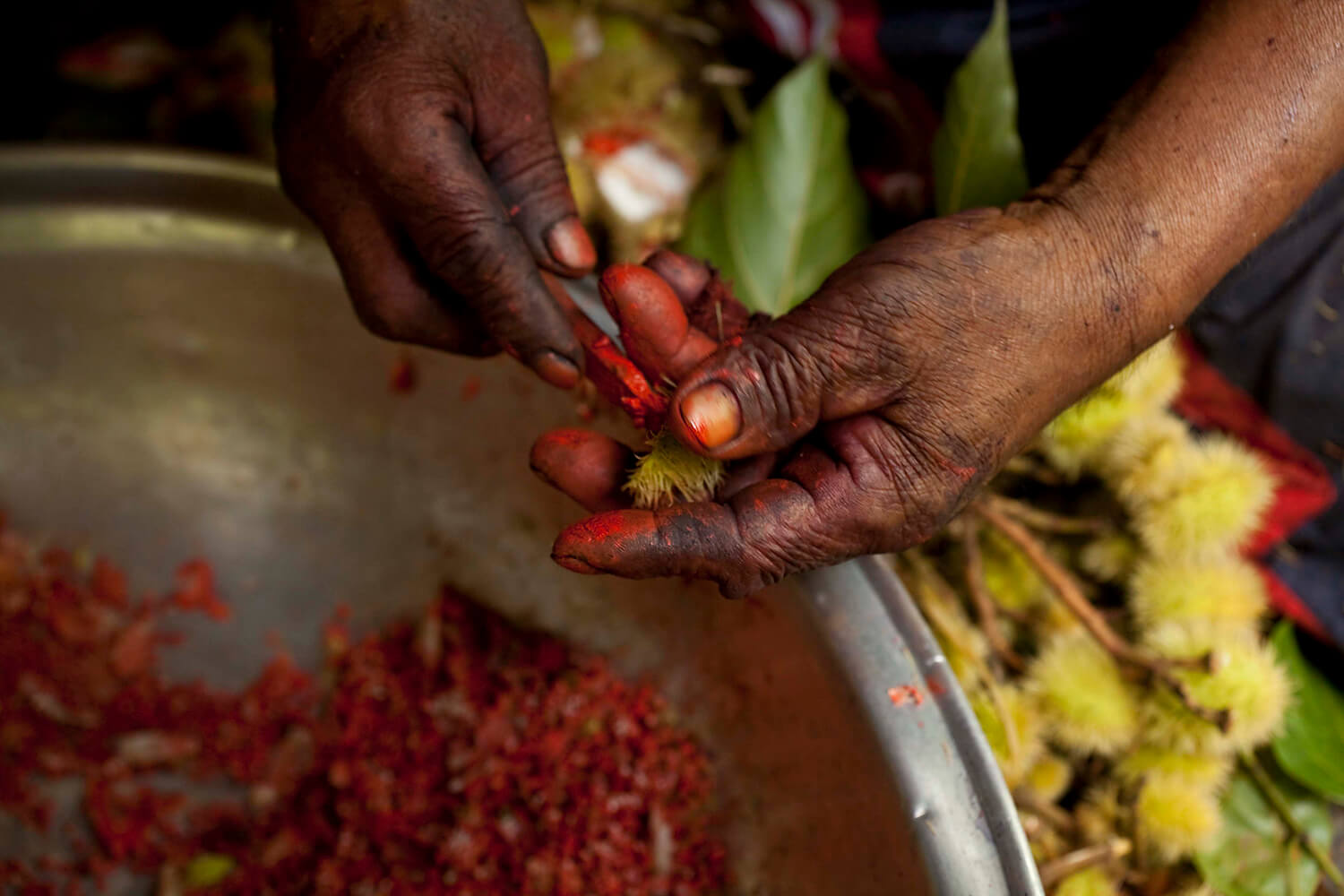
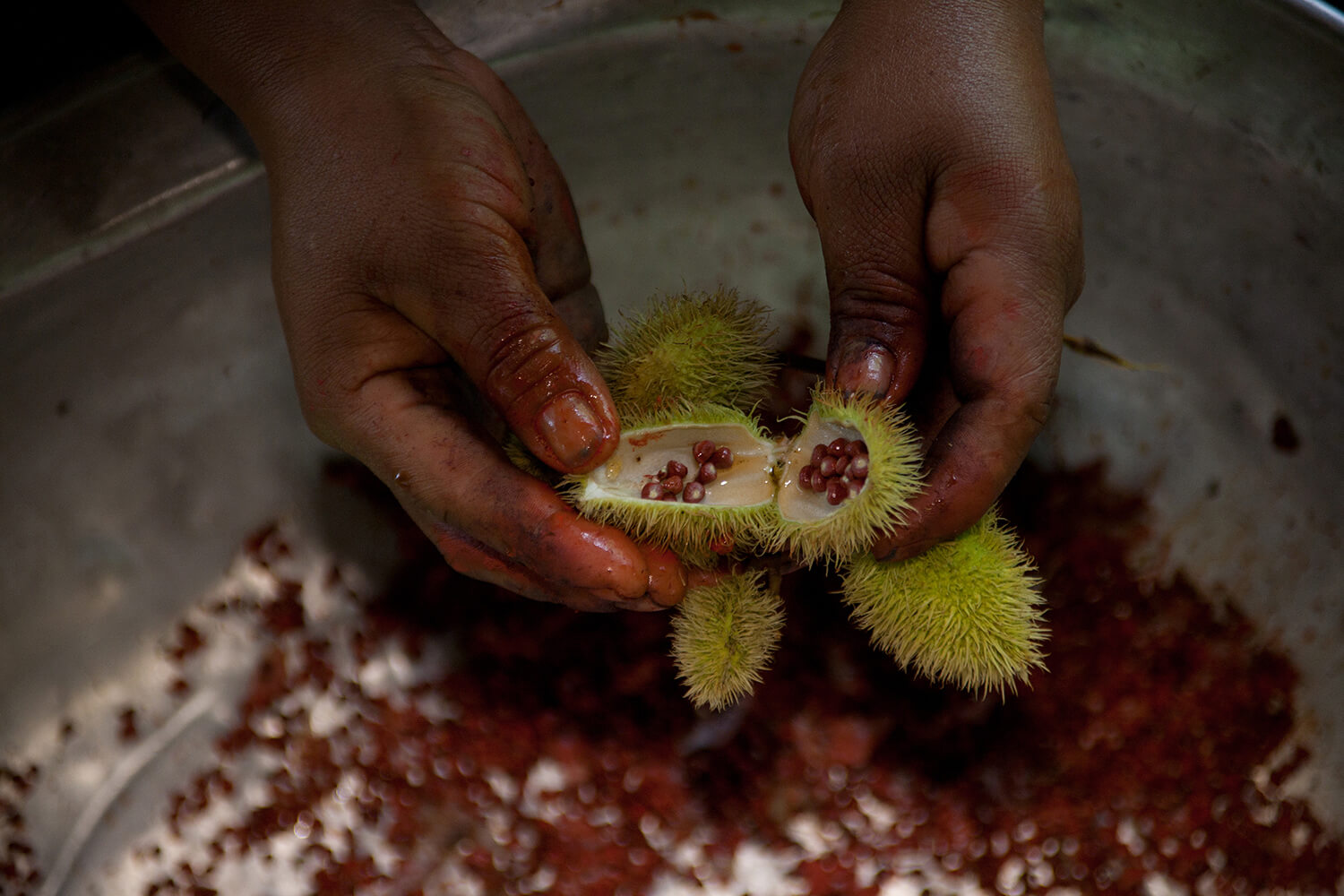

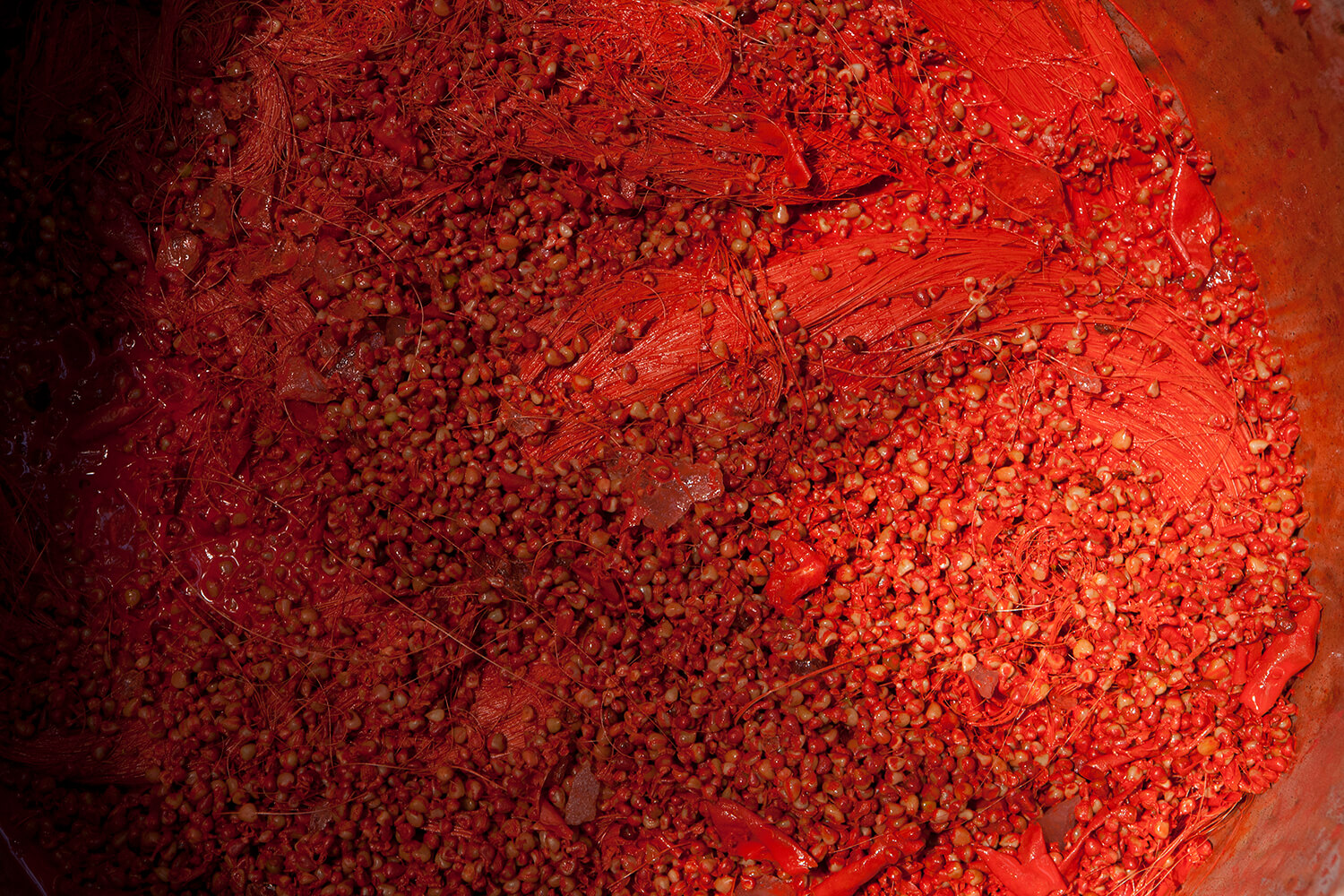
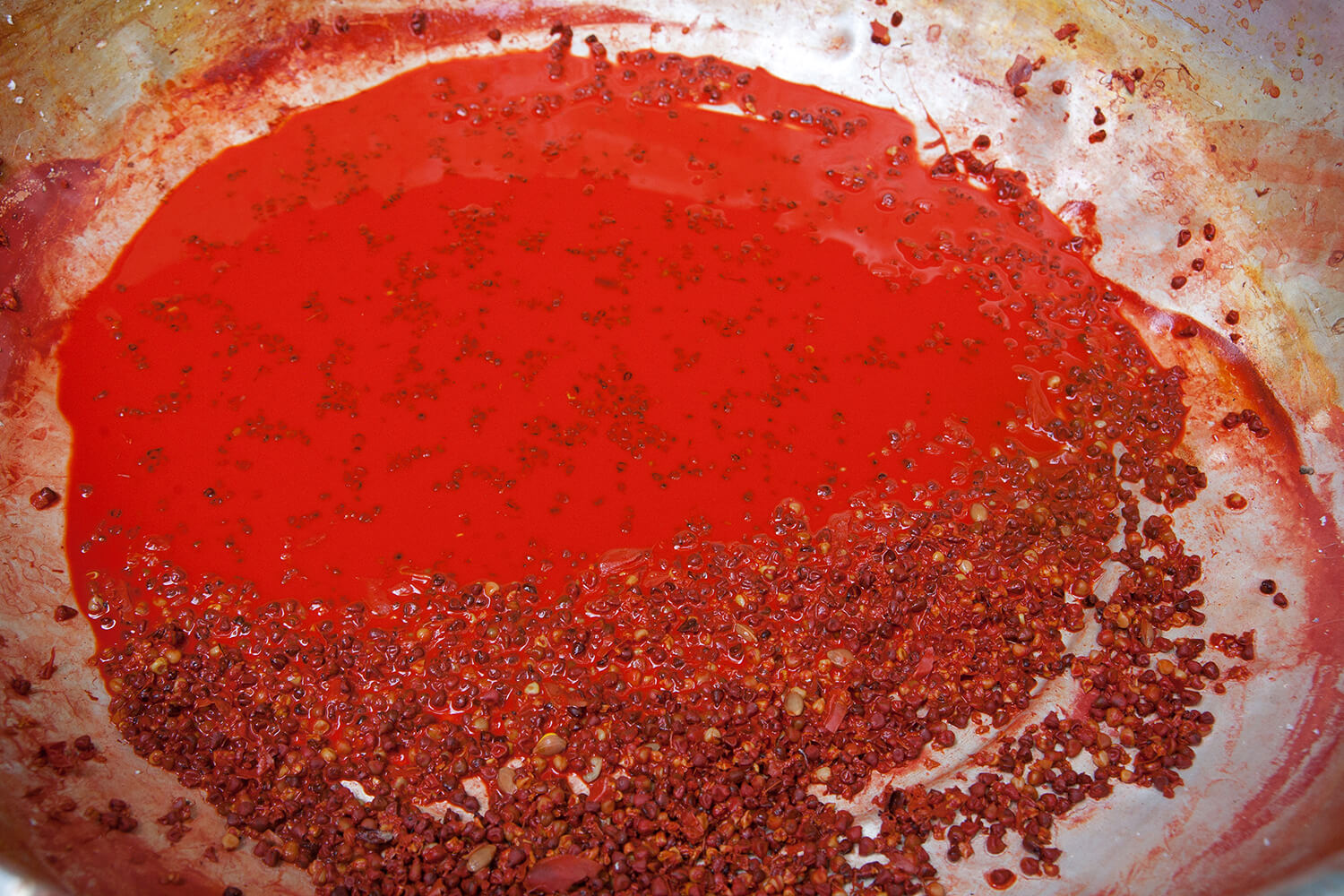
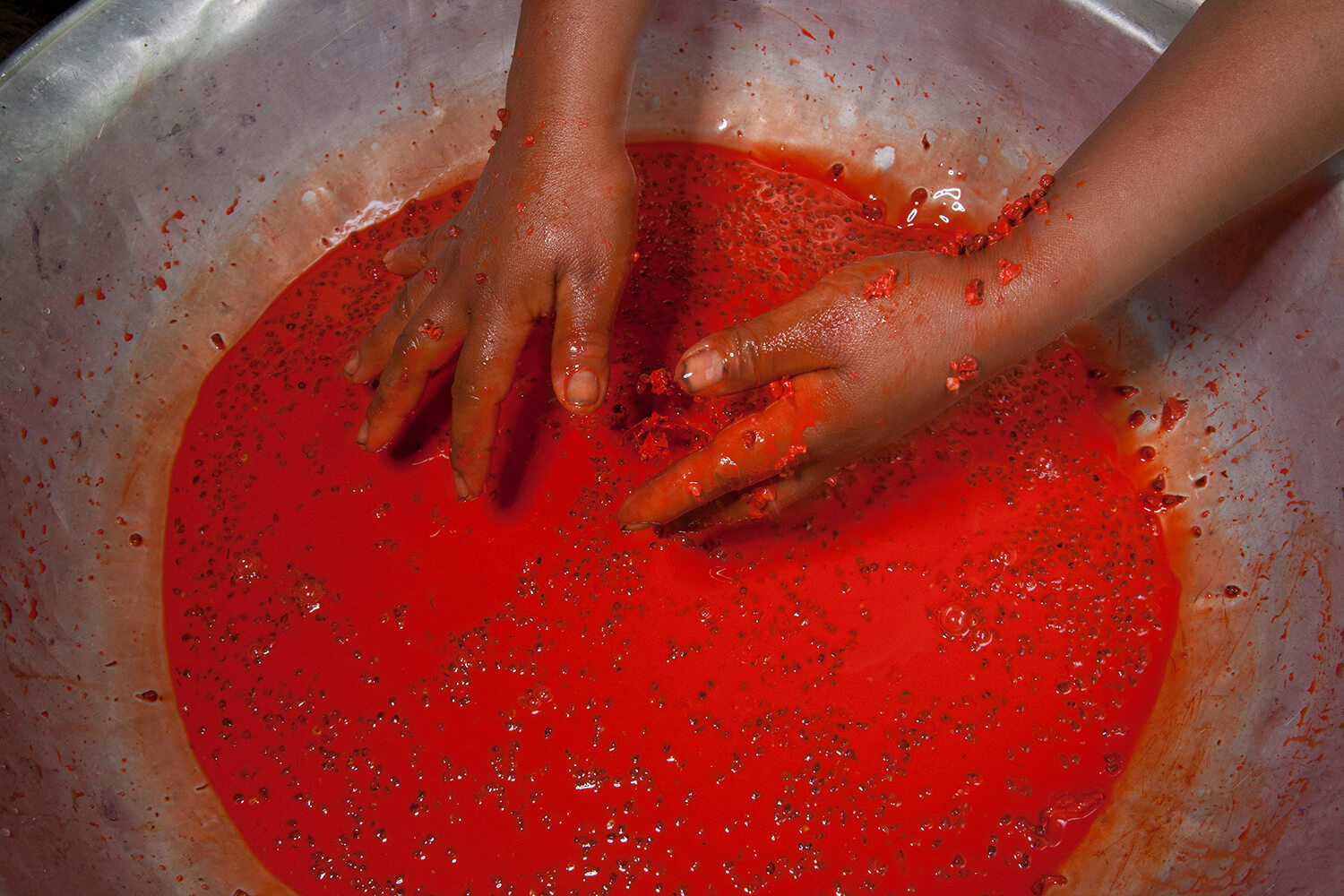
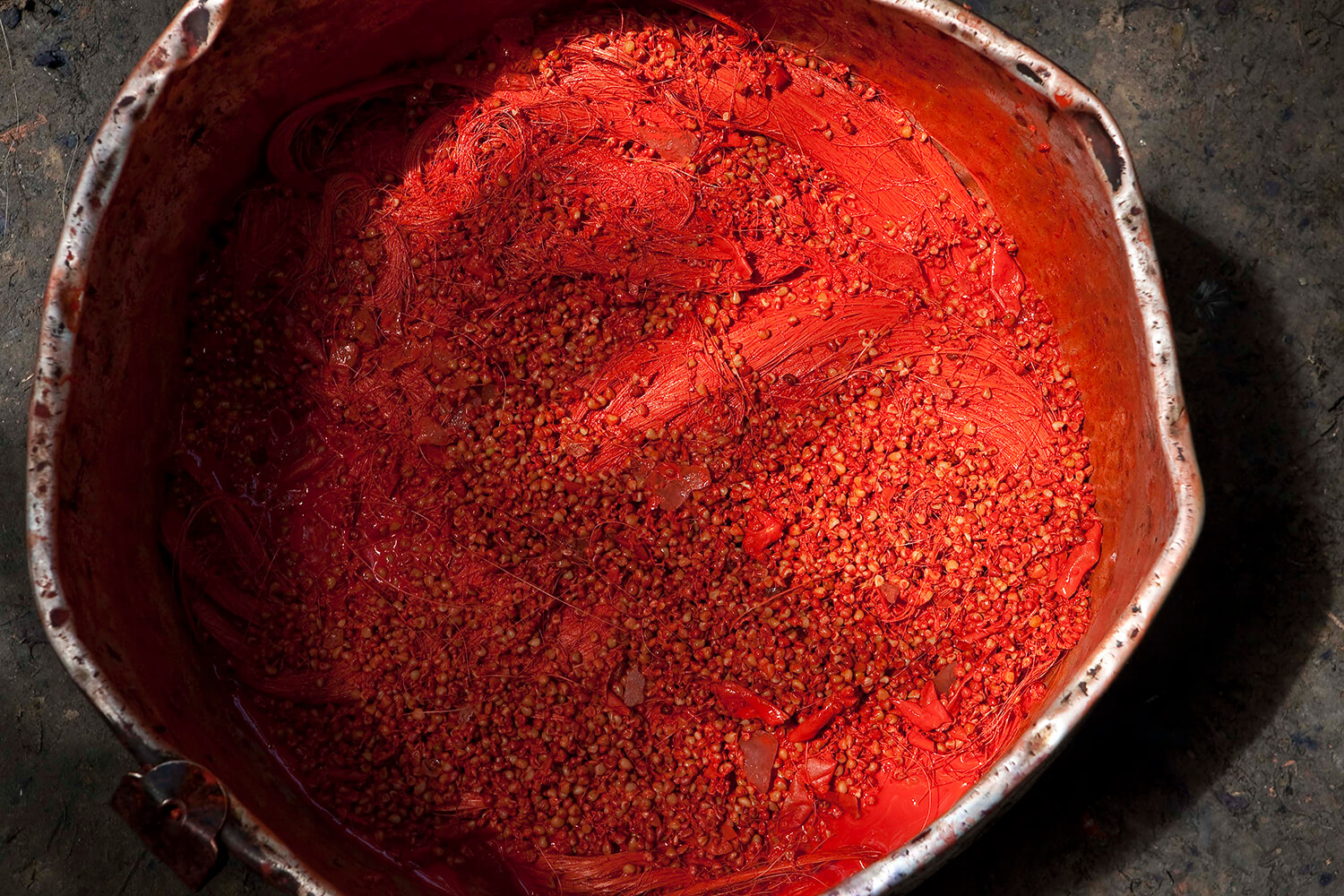
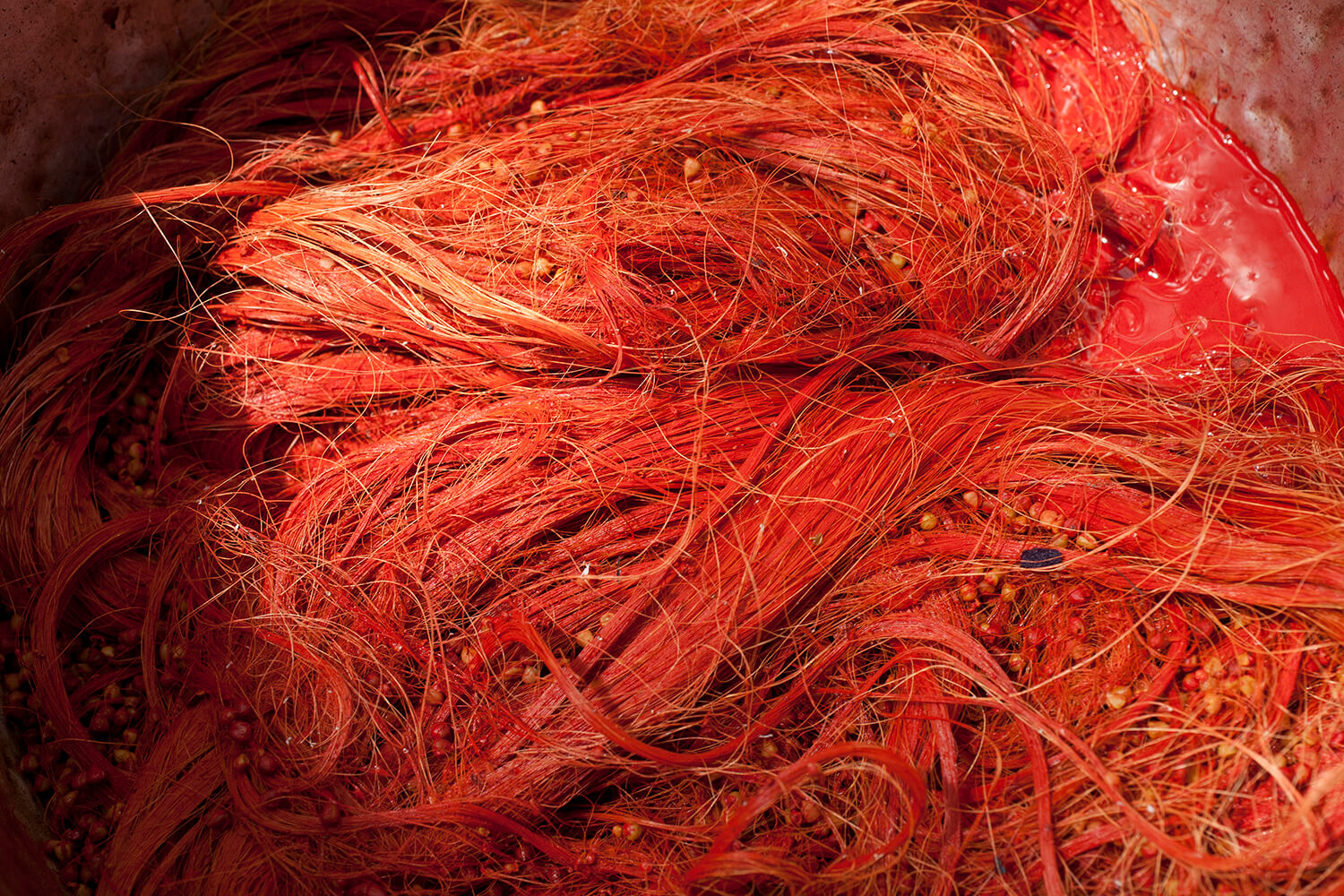
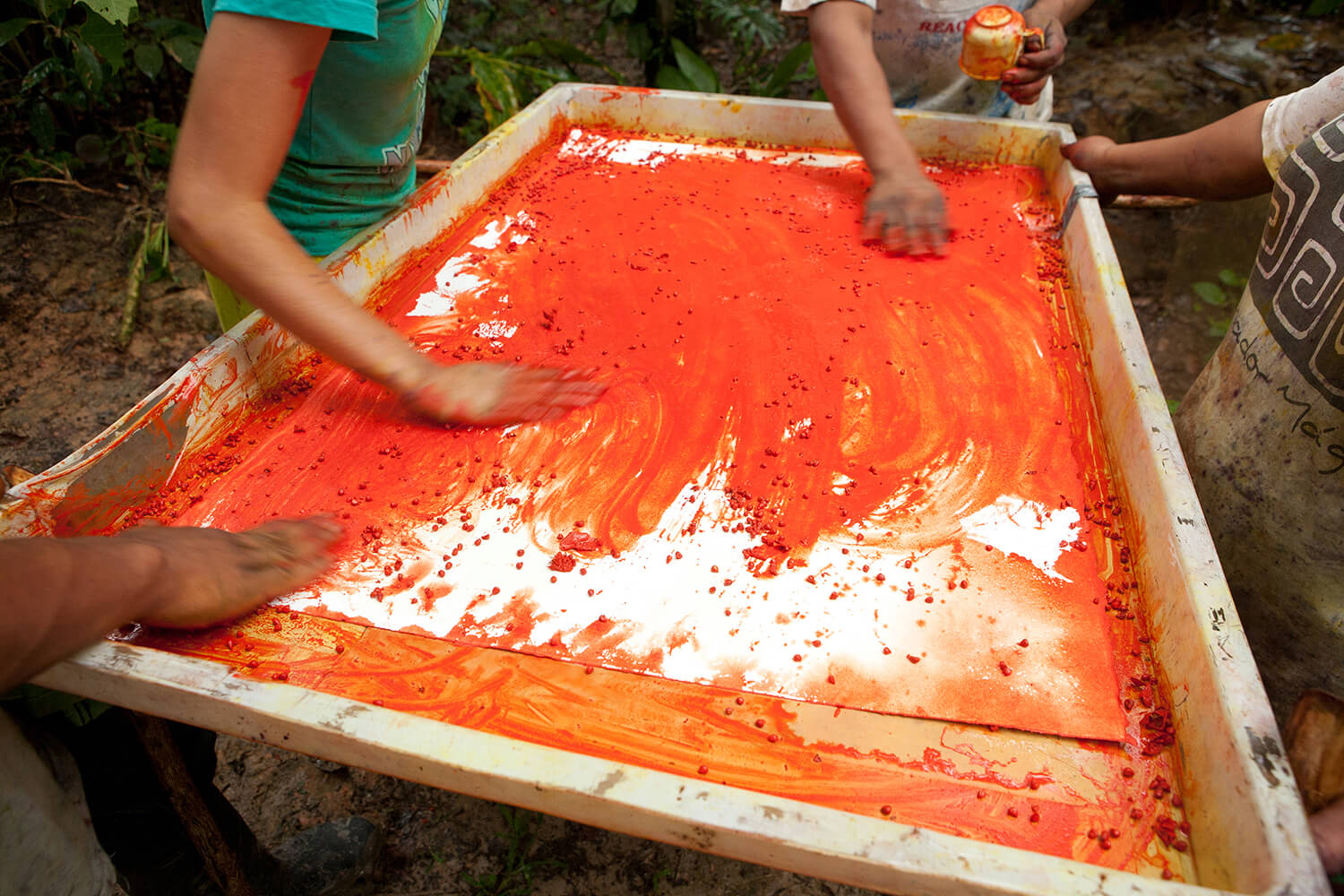
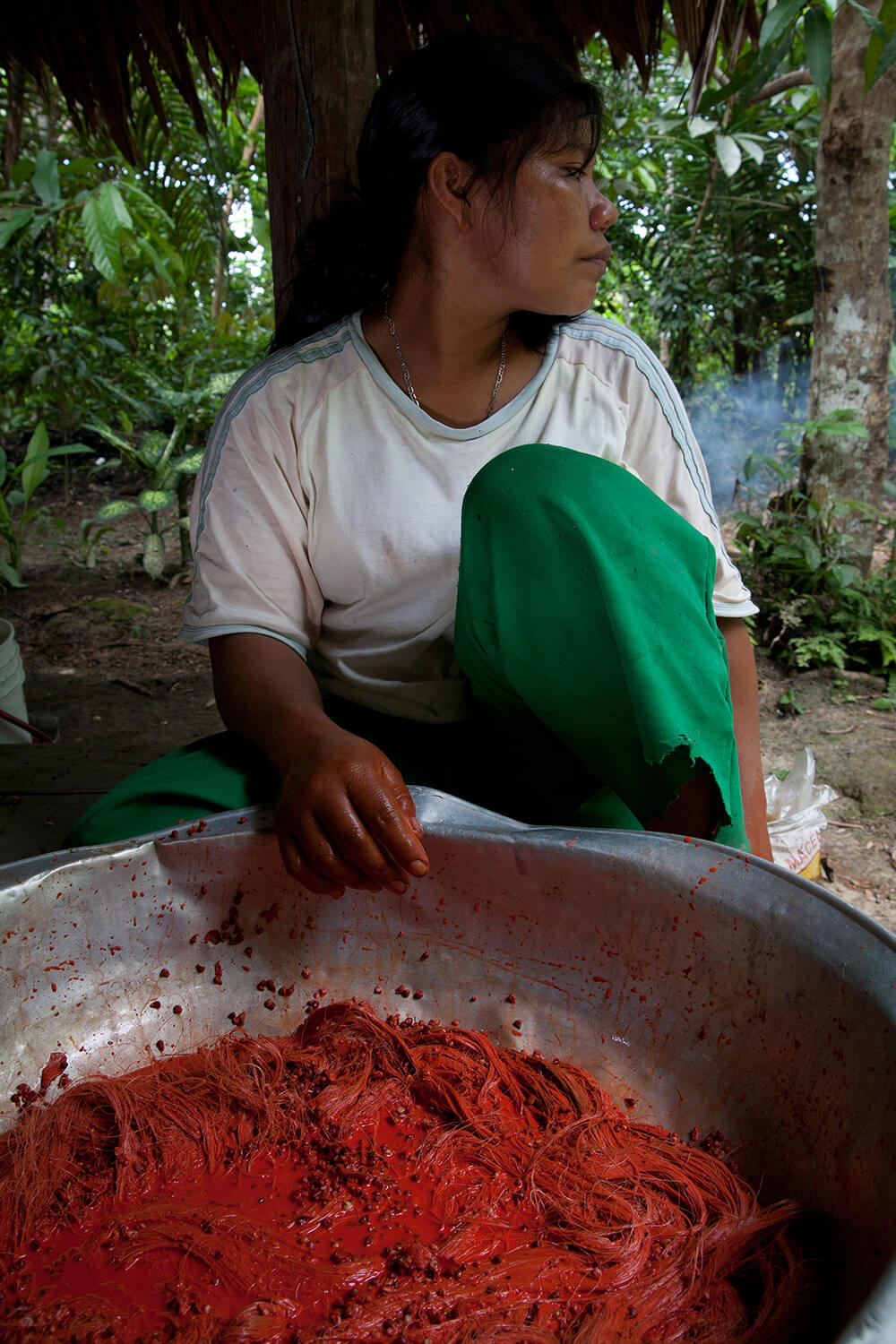

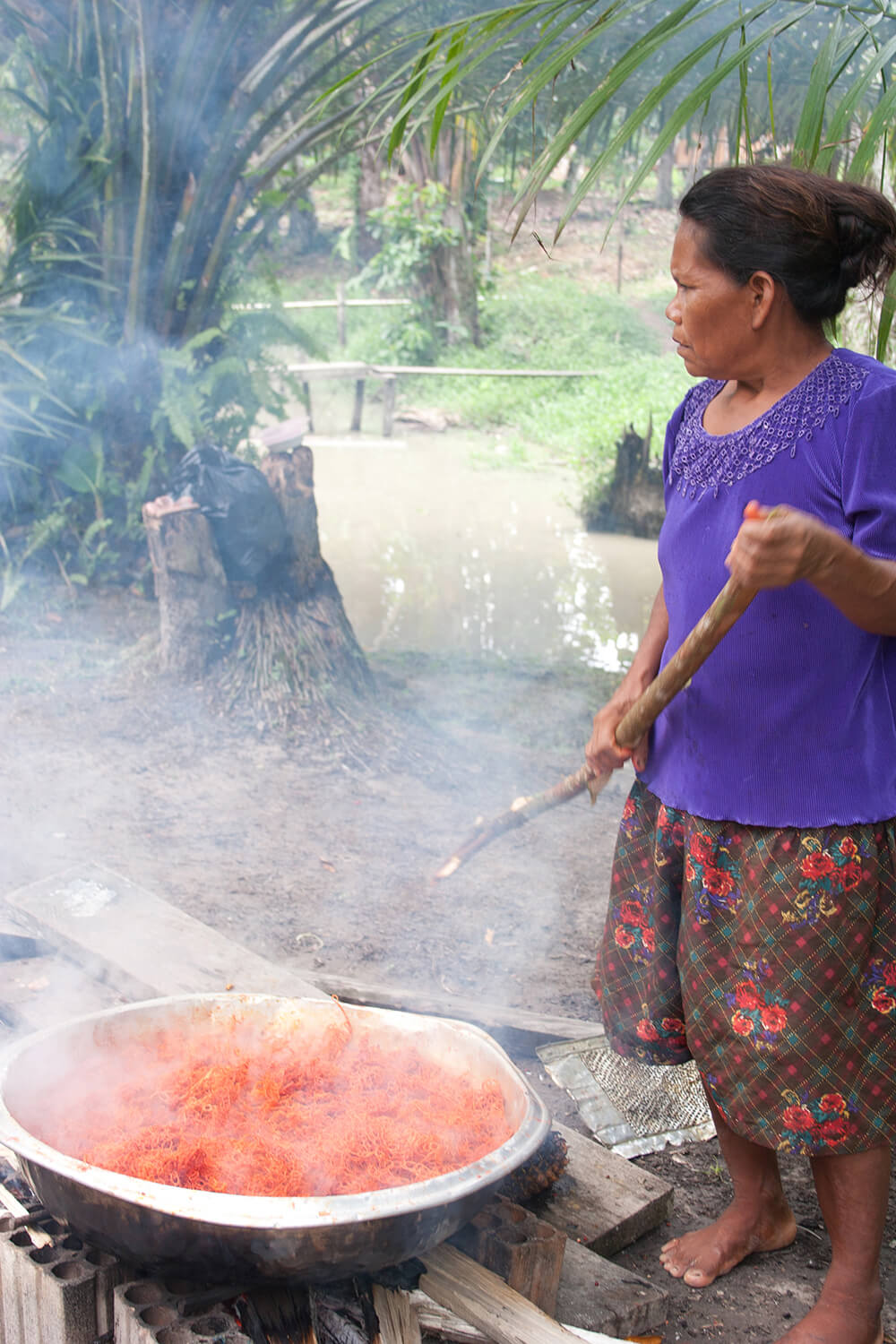
.jpg)